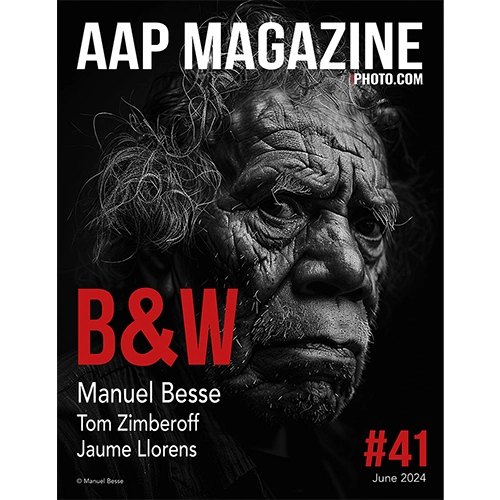We're thrilled to announce the winners of
AAP Magazine #41: B&W, a celebration of 25 exceptional photographers whose talent and vision have earned them a place in this prestigious issue.
These photographers represent 14 different countries across 5 continents, each bringing their own unique artistic style and perspective to the timeless art of black and white photography. It has been a true pleasure to delve into their captivating portfolios and explore the diverse ways they interpret and express the power of monochrome imagery. Black and white photography remains a powerful medium, capturing our imaginations and holding a special place in the world of art.
What makes black and white photography so compelling is its ability to convey emotion and depth with a simple, yet profound, palette. The absence of color strips away distractions, allowing the viewer to focus on the subtleties of light, shadow, and texture. This classic form of photography has an enduring appeal, offering a nostalgic and poetic quality that resonates deeply. Each time a beautifully executed black and white image is encountered, it rekindles a passion for photography and serves as a reminder of why the art form is so captivating.
The selected works range from powerful visual narratives to serene landscapes and evocative portraits, each portfolio offering a distinct interpretation of black and white photography. Whether shot on film or captured digitally, featuring rich contrasts or soft gradients, these photographers demonstrate a mastery of the medium that sets their work apart. Their images reveal the essence of their subjects, creating a visual experience that is both intimate and universally resonant.
We invite you to explore the stunning work of these talented photographers, whose contributions continue to enrich the world of black and white photography.
The Winner is Manuel Besse (France) with the series 'Macadam'
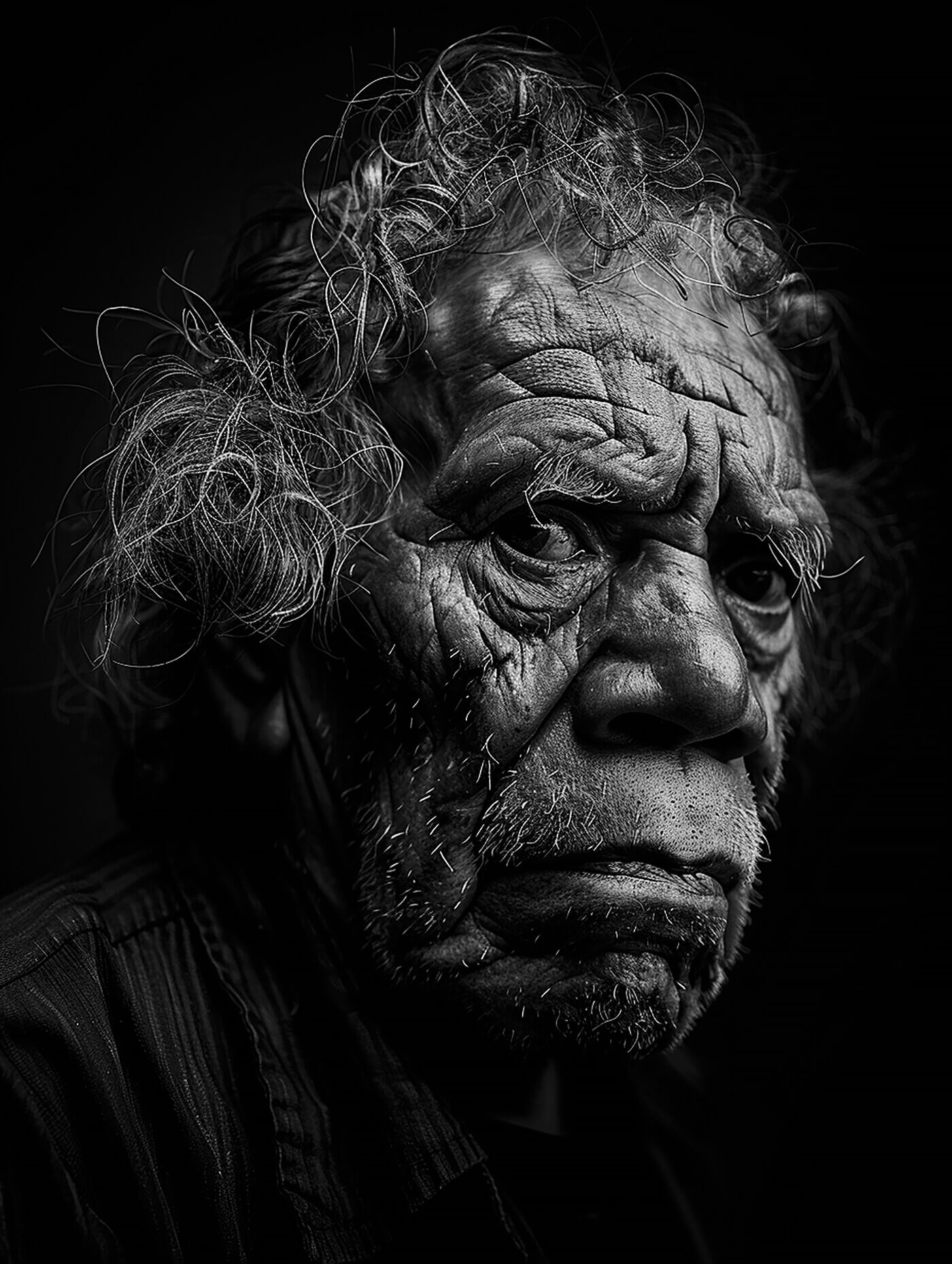
John E. Davis - New York City 2023 from the series 'Macadam' © Manuel Besse
No other city gives me the same impression. Right in the middle of it, squeezed, the tiny individuals, a monstrous height. I’m in the belly of the Big Apple, carrying my abyss. Above, daylight, clouds, the blue sky: the only note of color. Below, the reflection of lights imprints on the shop windows, the honking horns finish me off, I feel swallowed whole. Brutality, filth, everyone with their own burden. At the exit of the Brooklyn Bridge, not far from Dogtown Brooklyn, under a bridge, John E. Davis survives.
I spotted him from a distance. He reminds me of an Australian aborigine. I’m skeptical. I circle around him. The character is dense, intense. He yells, he speaks loudly, it’s all intimidating. He calls out to me. For the thousandth time, I explain that I’m a photographer and would like to take his portrait. He looks at me, questioning, then loudly declares: OK! I take four shots. The ending is happy.
www.manuelbesse.com
@manuelbesseofficial
All About Manuel Besse
The Second Place Winner is Tom Zimberoff (United States) with the series 'The White Fence of Boyle Heights, East LA'
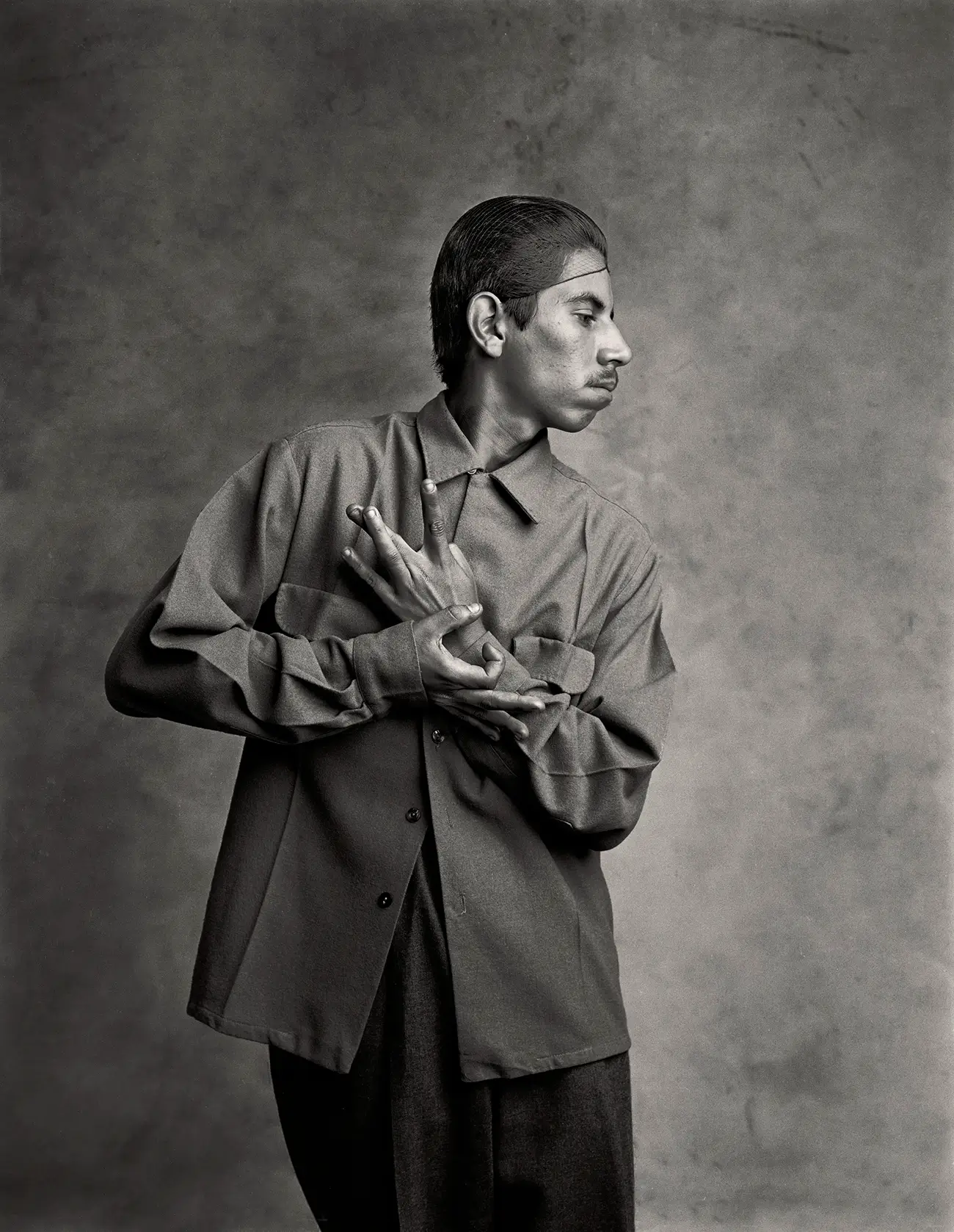
Condido “Mouse” Guztamonte from the series 'White Fence Gang' © Tom Zimberoff
Shooting assignments for news magazines rarely allow enough time for in-depth reportage, such as a comprehensive documentary photo essay. These kinds of projects typically require weeks or even months to execute effectively. However, when working on a magazine assignment, my task was often to visually illustrate whatever story a reporter was covering, and then quickly send off the film to meet tight deadlines. It was all part of the day’s work before moving on to the next assignment.
One particular assignment had me covering a story for Time about immigrant families living in East Los Angeles. In the Boyle Heights neighborhood, I found myself captivated by the vibrant expressions of a culture unfamiliar to me, one that truly warranted extensive documentation. Although I managed to spend some time photographing a lowrider car club, the experience left me wanting more. My attention was drawn to the East LA gangs—fellowships that were not only ferocious in nature but also visually compelling. My fascination with them stemmed less from their activities and more from their appearance.
A woman who led a non-profit organization, now known as Gang Reduction & Youth Development, facilitated my introduction to the leaders of White Fence, a gang I had encountered in Boyle Heights. Despite their violent history, they were striking in appearance—the oldest gang in LA, with a legacy of fierce rivalries dating back to 1900. I later mused that they must have wondered what gang sign I was trying to flash when I held my hands in front of my face, framing potential shots.
For a couple of days, I negotiated with White Fence, attempting to persuade them to visit my studio in West LA—an entirely different world from their perspective. Initially, they wanted to be paid, but that wasn’t an option. However, after some back-and-forth, they warmed to my idea of creating a historical record with a fashion-oriented twist.
They understood the art in what I was proposing. Their visual identity wasn’t just an affectation; it was a deliberate expression of social status. Gradually, they began to trust that my intentions were genuine—that I wasn’t there to exploit them or to make a socio-political statement at their expense, but rather to capture the pride with which they carried themselves. Their style was a statement in itself, and my goal was to document it by isolating individual gang members in a studio setting, away from the visual distractions of their neighborhood. The studio offered a neutral environment that allowed their personas to stand out. Although I didn’t spend enough time with them to identify a clear hierarchy, I believe they collectively agreed to the studio visit in exchange for beer and gas money.
On the scheduled day, I waited outside my studio on Beverly Boulevard. Eventually, six cars arrived, parking with little regard for the red-painted curb. A dozen White Fence members stepped out, but unfortunately, they didn’t bring their wives and girlfriends as I had requested. They explained that the women were at home, preparing for a fiesta, which was disappointing because I had hoped to capture their transformation—before and after the big hair, dark makeup, and tattoos. They shrugged it off, with no apologies and no promises for another opportunity.
During the session, they posed patiently, both individually and in small groups. They were intrigued by my six-foot-tall lightbox and large-format 4x5 camera, which they had only encountered in the context of cartoonish watch-the-birdie moments. Those not in front of the camera relaxed with beer, ate pizza that I had delivered, and wandered around the studio. After about two hours, they began to get restless. I made a brief speech about how we were just getting started and expressed my desire to return to Boyle Heights to photograph them on their home turf, and later to bring the women to the studio. They remained noncommittal, took the hundred dollars I offered for gas, and left.
zimberoff.medium.com
All About Tom Zimberoff
The Third Place Winner is Jaume Llorens (Spain) with the series Gaia
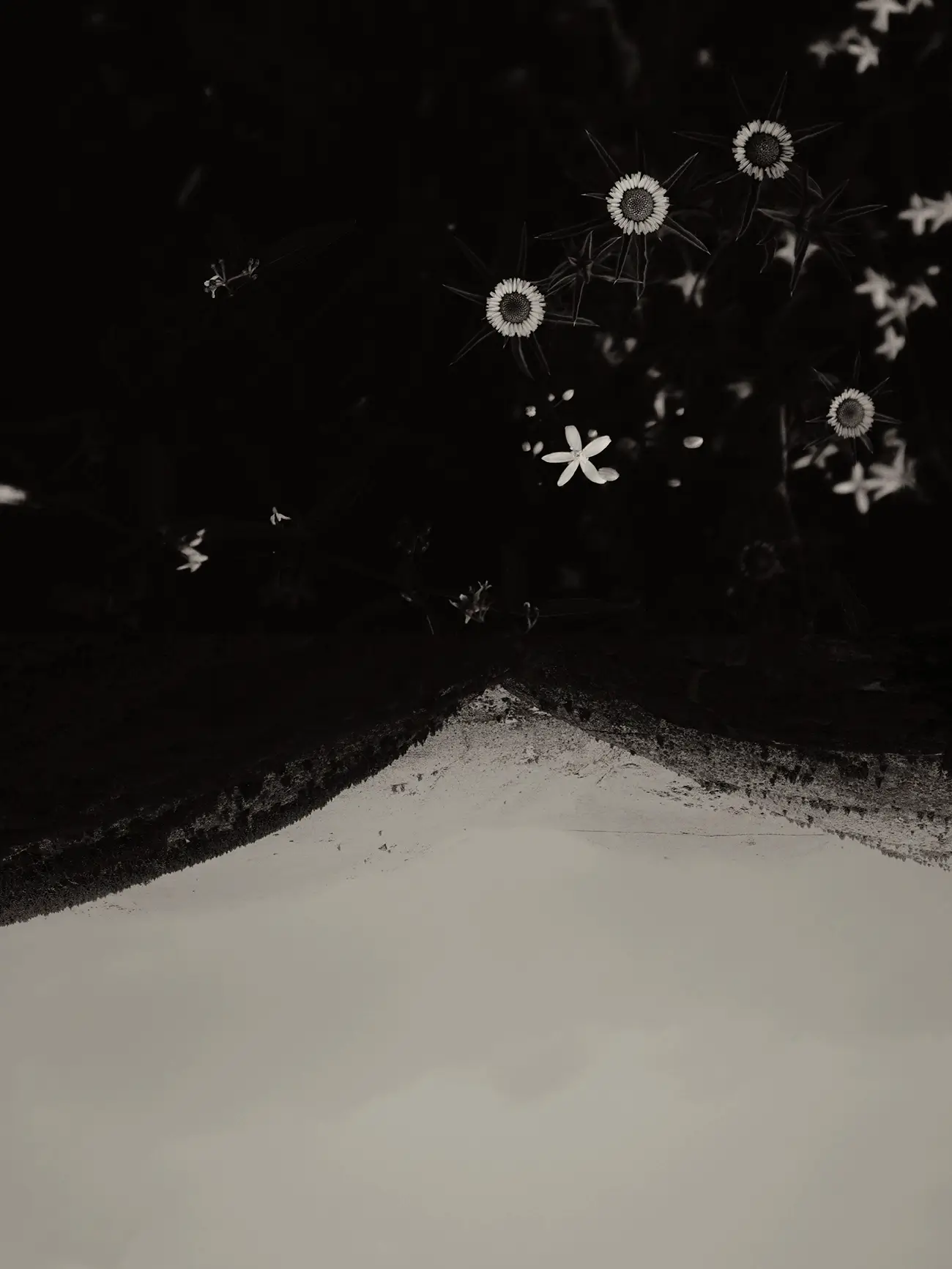
Díptic 128 from the series Gaia © Jaume Llorens
All the images in the Gaia series are created by juxtaposing two photographs of elements from my natural surroundings. This simple technique aims to generate images that are richer and more complex than the mere sum of their parts, much like combining two musical notes, as Ralph Gibson suggested in his theory of visual overtones. The resulting image often carries a sense of unreality or surrealism, as is the case here, where a photo of wildflowers is paired with one of a mountain.
www.jllorens.com
@jaume.llorens
Merit Award recipients
Gavin Libotte (Australia)
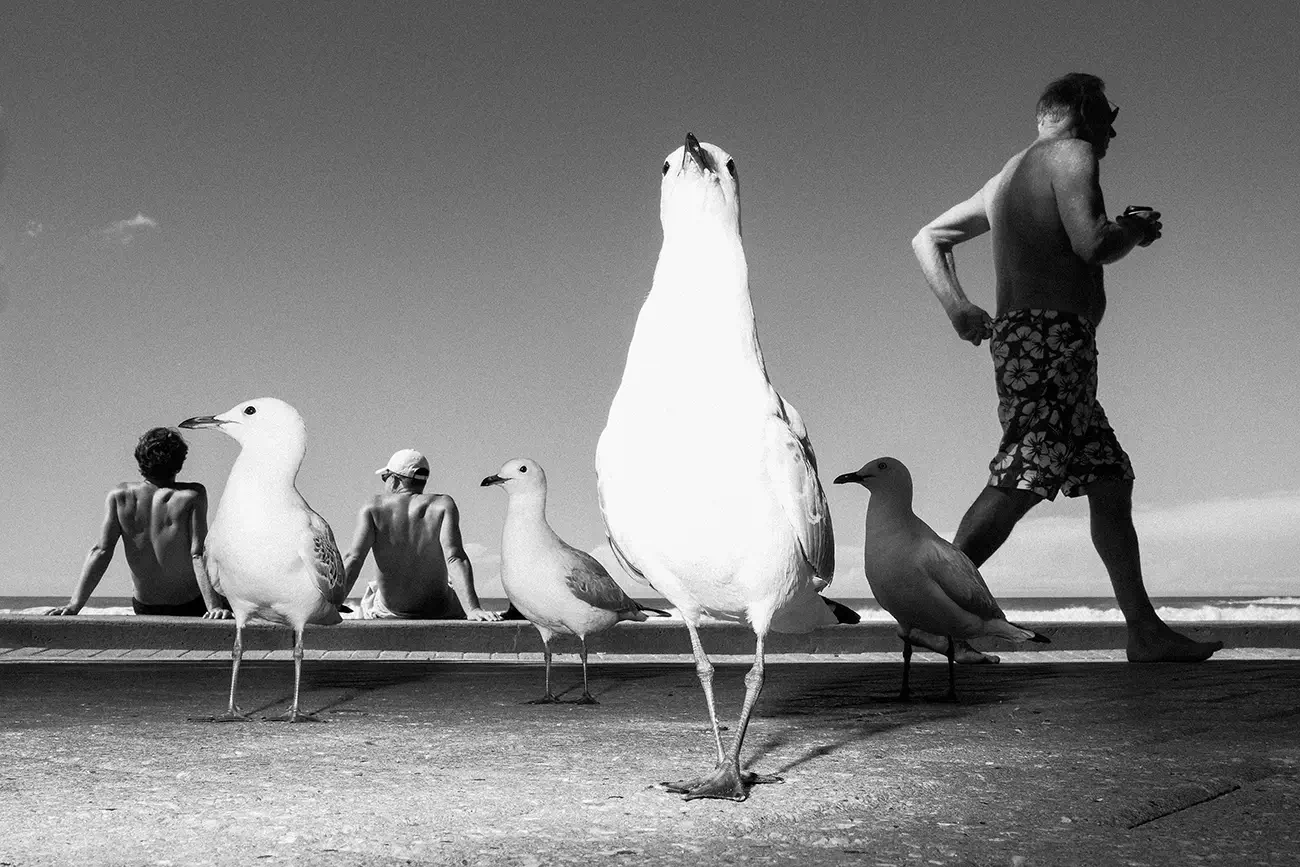
Of Birds and Men from the series Street Level © Gavin Libotte
I noticed that few street photographers shoot from ground level. When I started doing this, and adding the element of flash, I was astonished at a whole new world of perspective. Scenes appeared that I would have never imagined.
This made me realise that where you place the camera has a profound effect on the final image and can free up the imagination. I was able to access a magical and secret world outside the notice of the regular passer by.
New perspective can be applied to any life challenges. If we can challenge ourselves to see things from other angles and points of view, it can spark new possibilities and fresh approaches to the situation.
www.beeblebroxcreativestudio.com/photography
@gavinlibottephotography
All About Gavin Libotte
Giandomenico Veneziani (Italy)
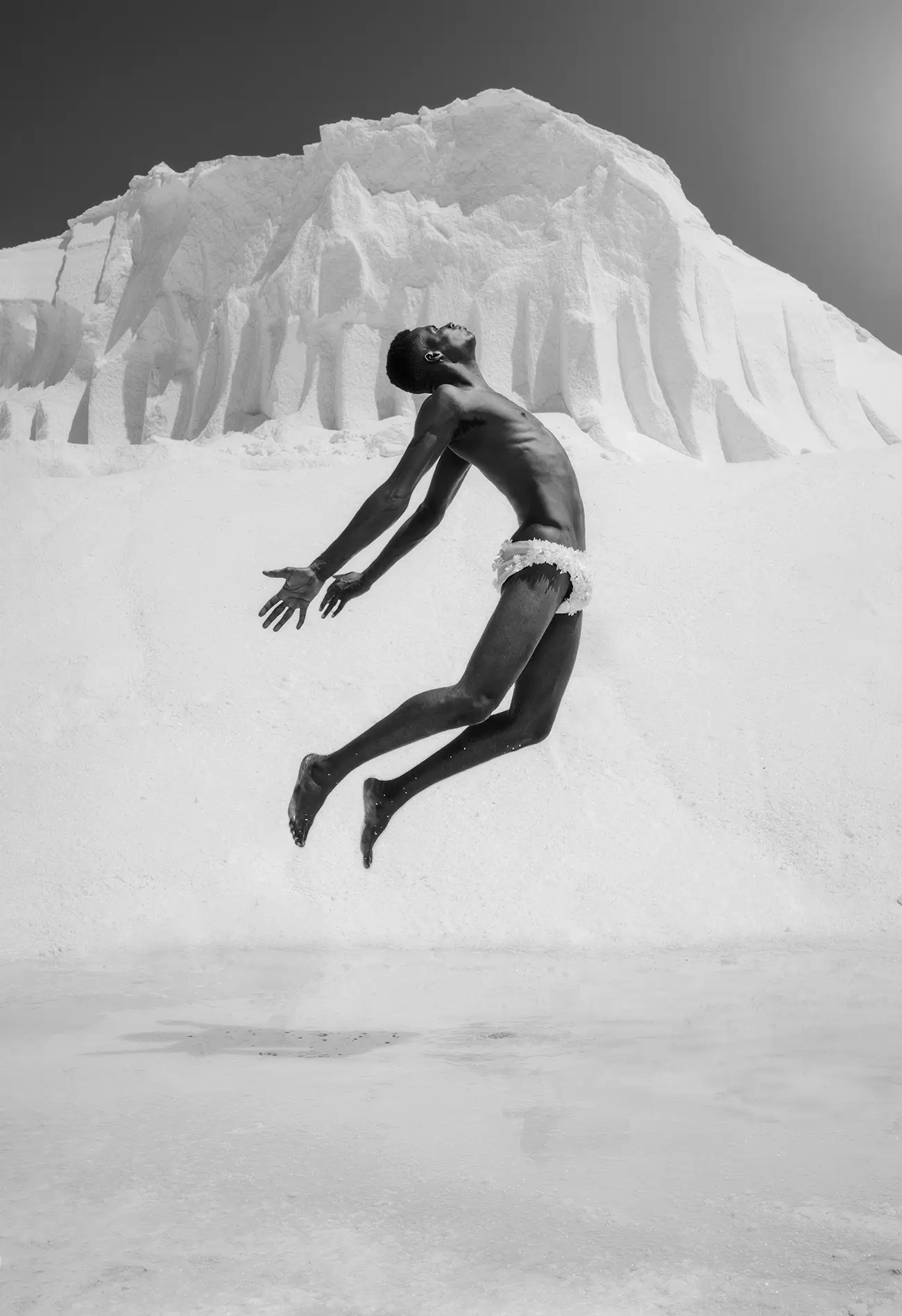
A deal with God © Giandomenico Veneziani
The heart of Hell is not fire, but ice.
Cold as hatred, dehumanization and relational death. The body is enveloped by the cold waters of the Cocytus and at that moment all desire is extinguished and man can only contemplate his failure.
Cryogenized in this immense river, which separates the world of the living from that of the dead, the human being becomes stone, soulless, insignificant, mute and inert. He lets himself be transported aimlessly by the great Luciferian sacrificial machine and the ”mperador” of the painful kingdom, mocking, makes fun of the imperfect creation of the Father, who observes the macabre infernal dance choreographed by his last Son from above.
He is aware of how great the suffering of mortals is, as it is he himself who inflicts it in the same way as the Fallen Angel.
The truth is that the Almighty feels envy for the pleasure that the Morning Star feels in giving pain.
With lies he helps man to ascend to Him. His intent is not to save him, but his only reason for being is to be able to continue the eternal struggle with his beloved Genius of Evil.
With the photographic work A Deal with God the author wanted to depict that fine line that divides good and evil, underlining the fact that man is not able to act with free will, as he is only a puppet in the hands of a twisted Universe.
To bring the right images to life, it was decided to use the salt factory located inside the salt pans of Margherita di Savoia, in Puglia (Italy) as a location.
The choice of outfits was important. Thanks to the collaboration with the artist Saverio Maggio, who lent his creations to the project, it was possible to make the poetry inherent in the photographic story impactful.
The clothes, with their ethereal style and light image, are actual works of art. Recycled materials were used for their construction. With his hands and his creativity, the stylist carries out real transformations, giving new life and a new dimension to what for all is considered simple waste.
From a simple blister pack of medicines or milk containers, together with scraps of fabric of different levels of value, it is possible to compose harmonious garments like a symphony, which enhance the wearer, giving the whole a surreal image.
The study of materials and their processing produce artifacts that can be defined as handicraft diamonds.
The craftsman is the one who with his work can provide us with the necessary tools to save us from alienation, neurosis and anxiety typical of contemporary living, giving the world magic and enchantment.
jeanven.com
@jeanven.official
All About Giandomenico Veneziani
Jaejoon Ha (South Korea)
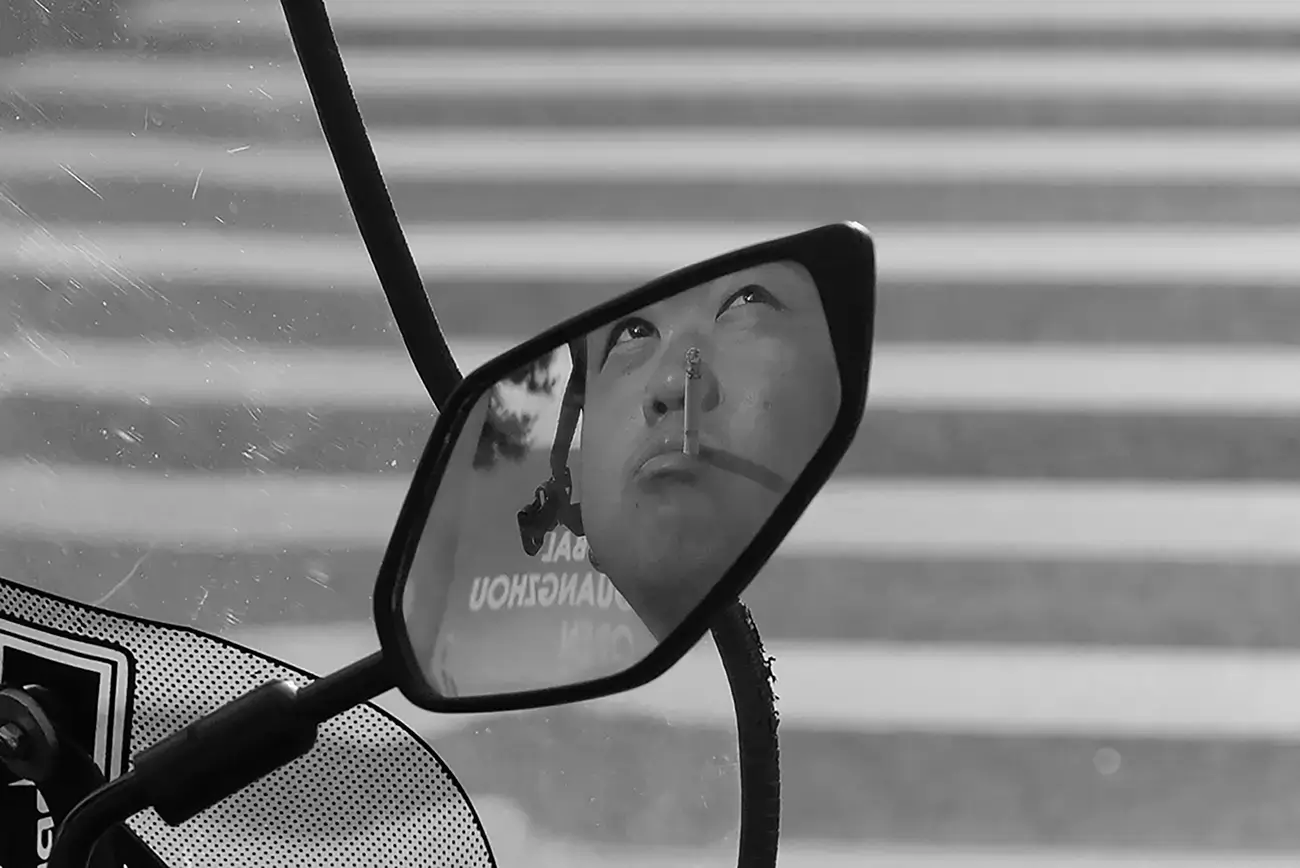
Take a ride in Seoul © Jaejoon Ha
We all travel around Seoul using our own favorite modes of transportation. A delivery man going about his busy day on a scooter, a dog people-watching with a backpack, an elderly couple taking the subway to Gyeongbokgung Palace on the weekend, and a commuter riding a bicycle to work when traffic is restricted during the rainy season. We all choose our own modes of transportation!
@jb.0611
All About Jaejoon Ha
Ernie Luppi (United States)
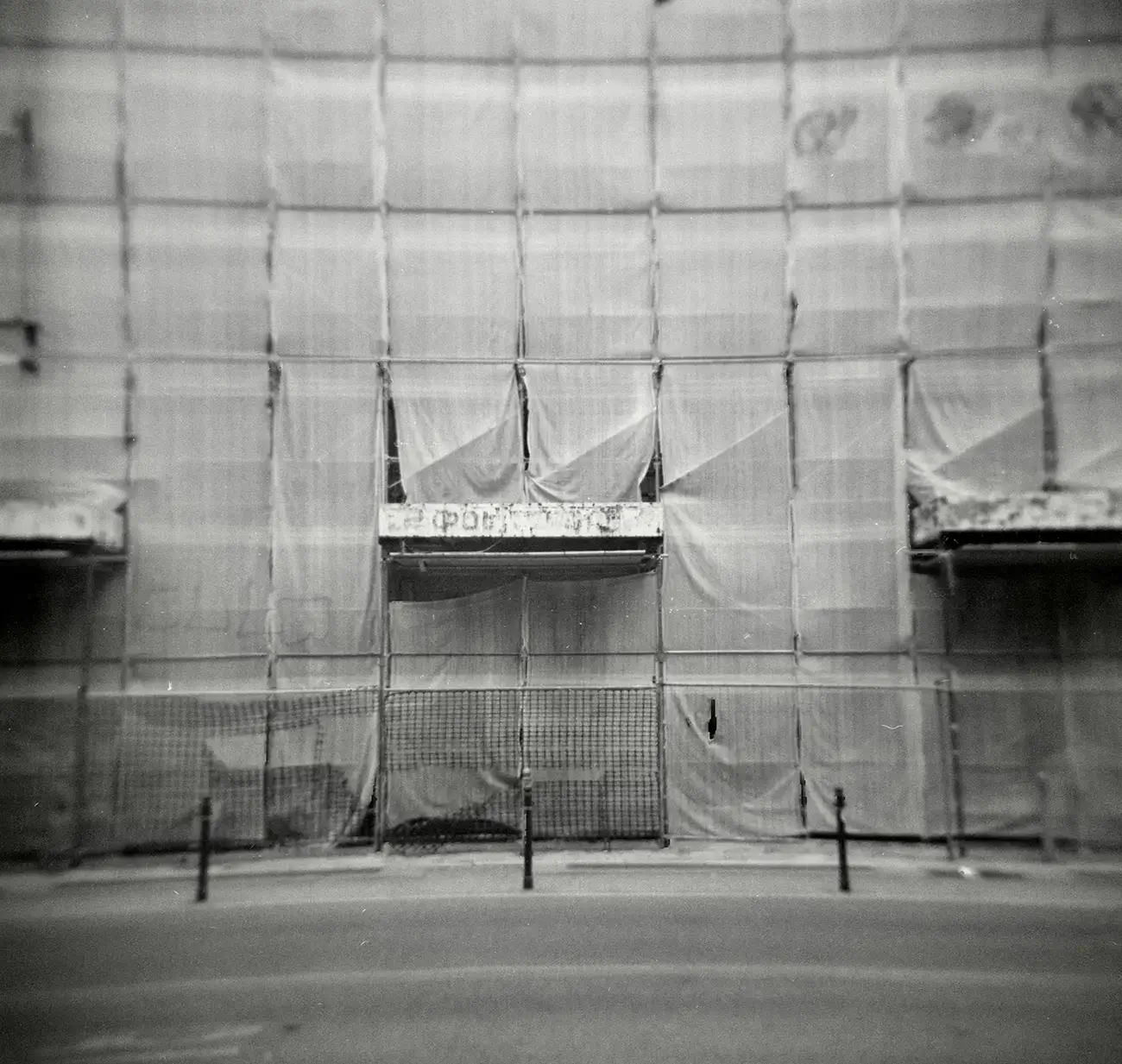
Underwraps, Como, Italy from the series Bella Italia 2023 © Ernie Luppi
I have travelled to Italy many times in my life and used various format film cameras. On my last visit (October 2023) I decided to bring a Holga camera because I was looking for a different feel and
photographic experience. These images are the results.
@ernie_luppi
All About Ernie Luppi
Andrea Torrei (Italy)
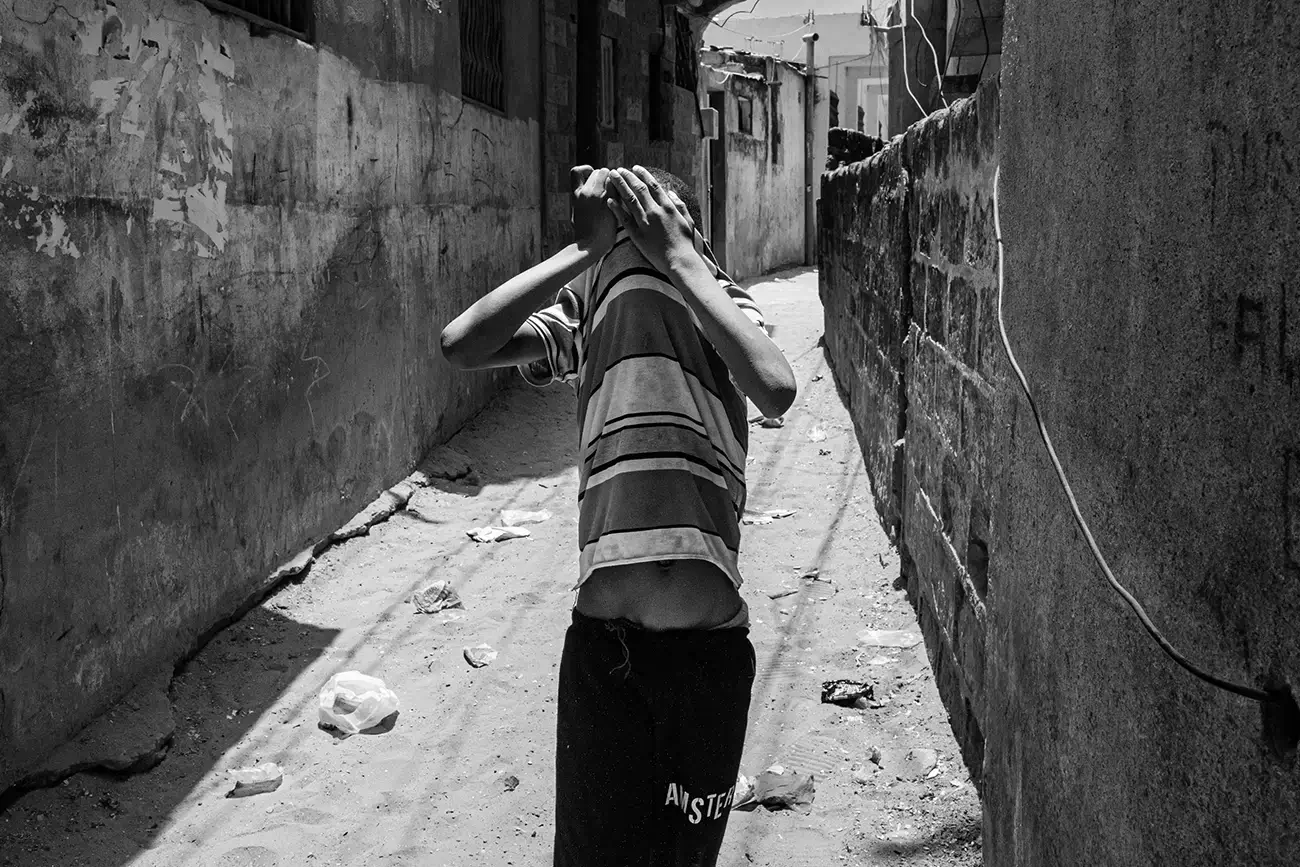
Playful minds © Andrea Torrei
The curiosity of children and adolescents knows no limits. It breaks boundaries and runs fast down a road full of creativity. Anything will serve the purpose to have a good time alone or with friends and also to exploring the environment, others and, above all, themselves. I believe that technology and creativity can create a good and health relationship enhancing each other. What happens when no smart gadgets are available for the young ones? An improvised paper mask to wear and scare passers-by, a plastic bag or a t-shirt to play hide-and-seek. A world of pure imagination takes form where we, as adults, are not allowed to enter, not anymore. When we are given the privilege to take part in it, we can only recall the importance of curiosity that is at the heart of all learning and help us form more meaningful connections with life and others.
www.andreatorrei.com
@andreatorrei
All About Andrea Torrei
Beamie Young (United States)
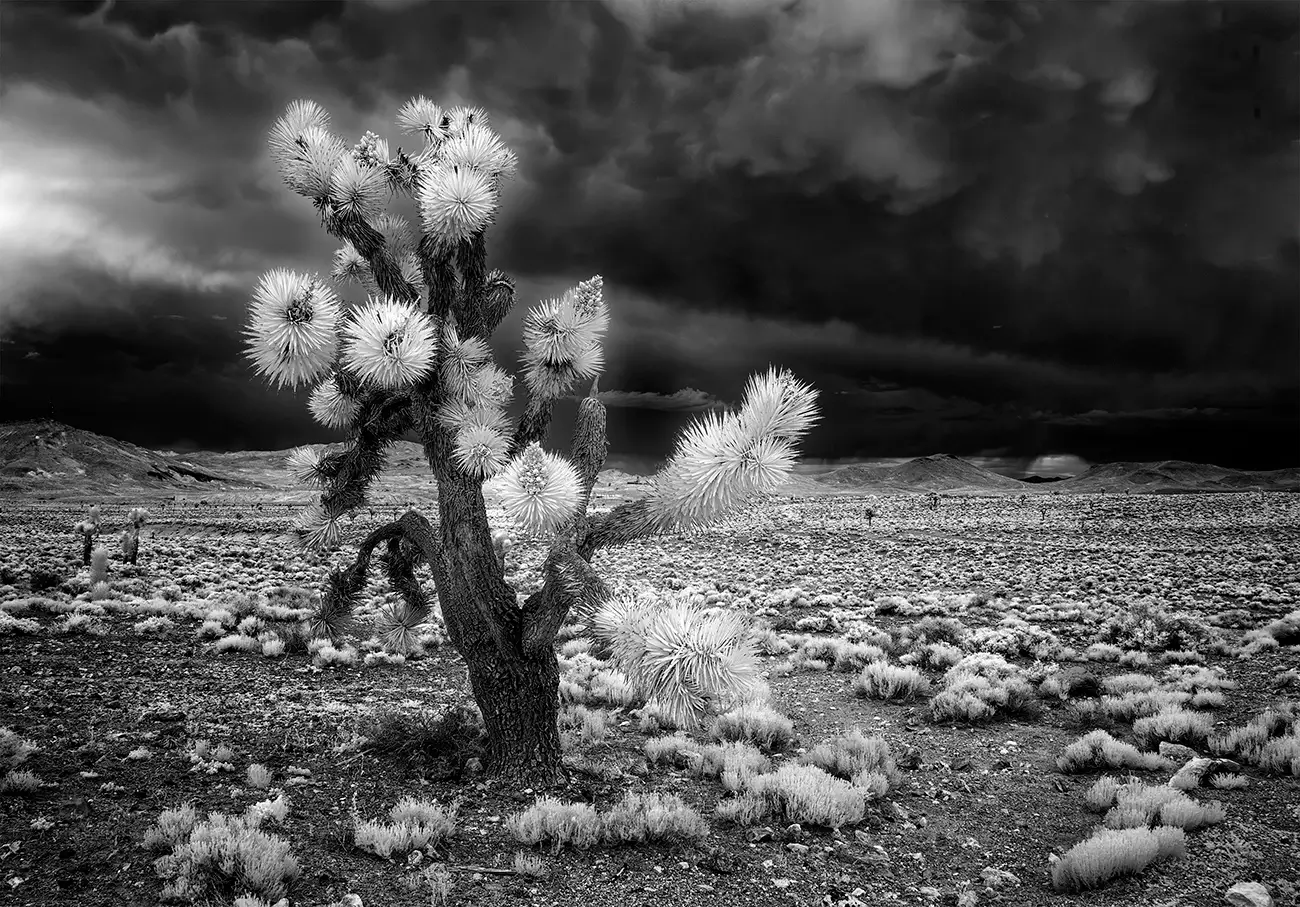
Dark Bloom from the series Headed West © Beamie Young
In my quest for organic patterns in nature I am drawn to the American
southwest. With stark light and ever shifting environments we see the very
structure of our earth.
beamie.smugmug.com
@beamie2
All About Beamie Young
Asako Naruto (Japan)
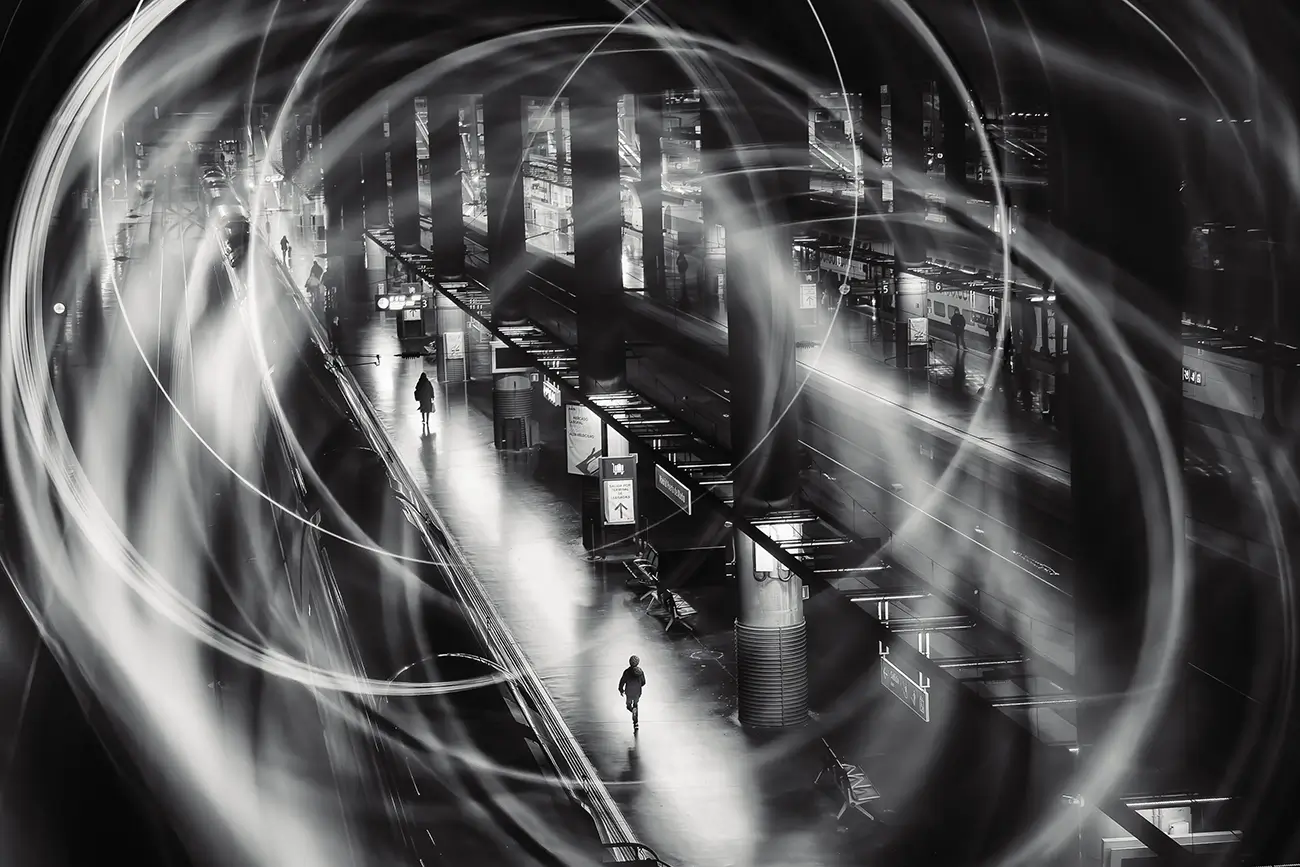
Don't miss that train from the series Galactic Railroad in Reverbration © Asako Naruto
Her latest project, “Reverb+Graphy,” is an attempt to visualize scenes that play like echoes in the brain. In this series, the sensation of evoking reverberations and afterimages is expressed through the effect of a prism filter attached to the lens. This featured series, Galactic Railroad in Reverbration” is a spin-off from that project. Using the motif of a train station at night, the photographer depicts Atocha Station in Madrid as a galactic train station, inspired by her childhood memories of Kenji Miyazawa's “Night on the Galactic Railroad” and Leiji Matsumoto's “Galactic Railroad 999”.
asakonaruto.myportfolio.com
@asako_fotografa
All About Asako Naruto
DJ Shelwell (South Africa)
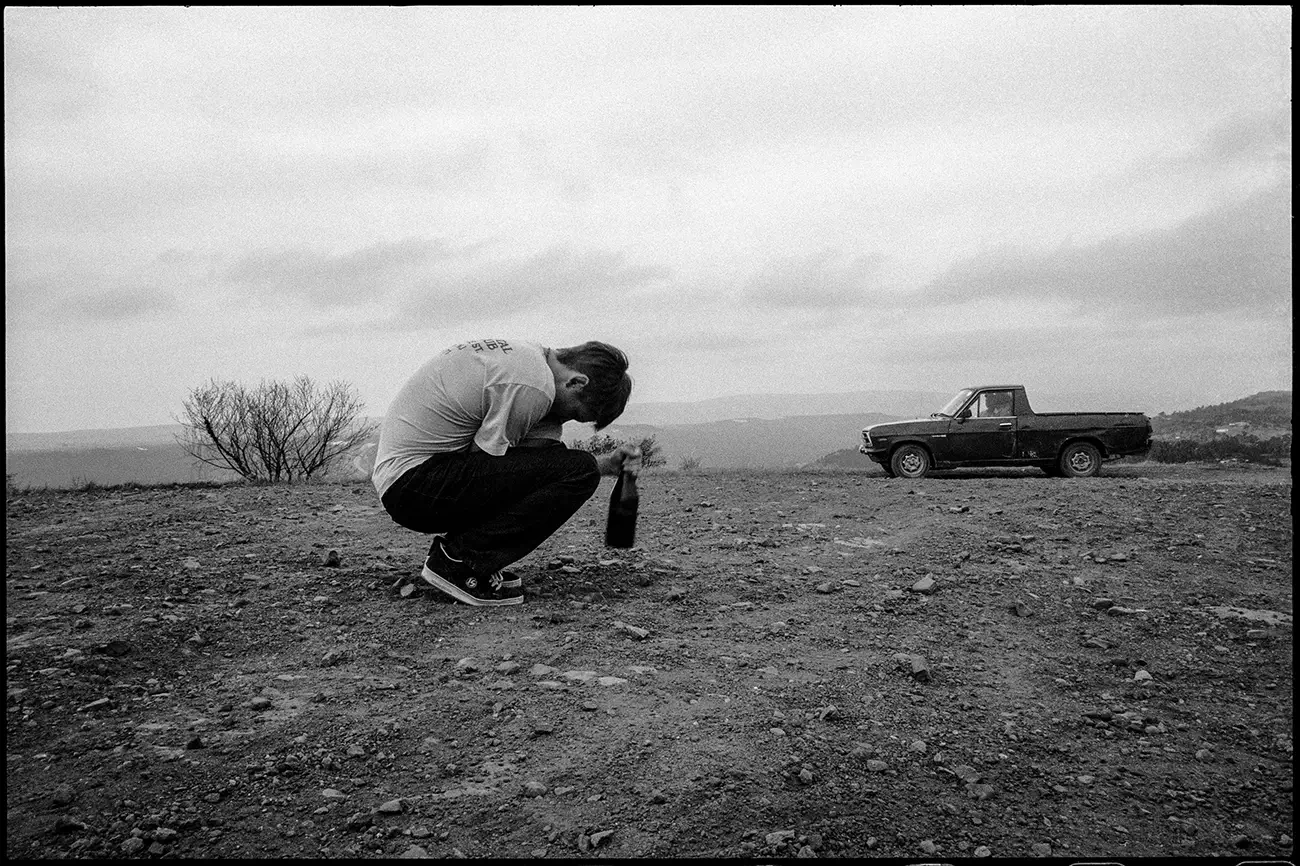
We'd sometimes go up to a place called Mountain Drive on the edge of town and drink beer from the series NINETEEN NINETY 6/7 A © DJ Shelwell
Almost twenty five years, I lived together with my three best friends in a small University town in South Africa that had just transitioned into democracy. We embodied the kind of grungy liberal-arts student life that might now seem so familiar as to be cliche. But I claim we were unique, and these images are a perfect time capsule. The years were 1996 and '97 and the address number of the second floor Victorian warehouse above a disused bakery was 67A.
@djshelwell
Chris Yan (China)
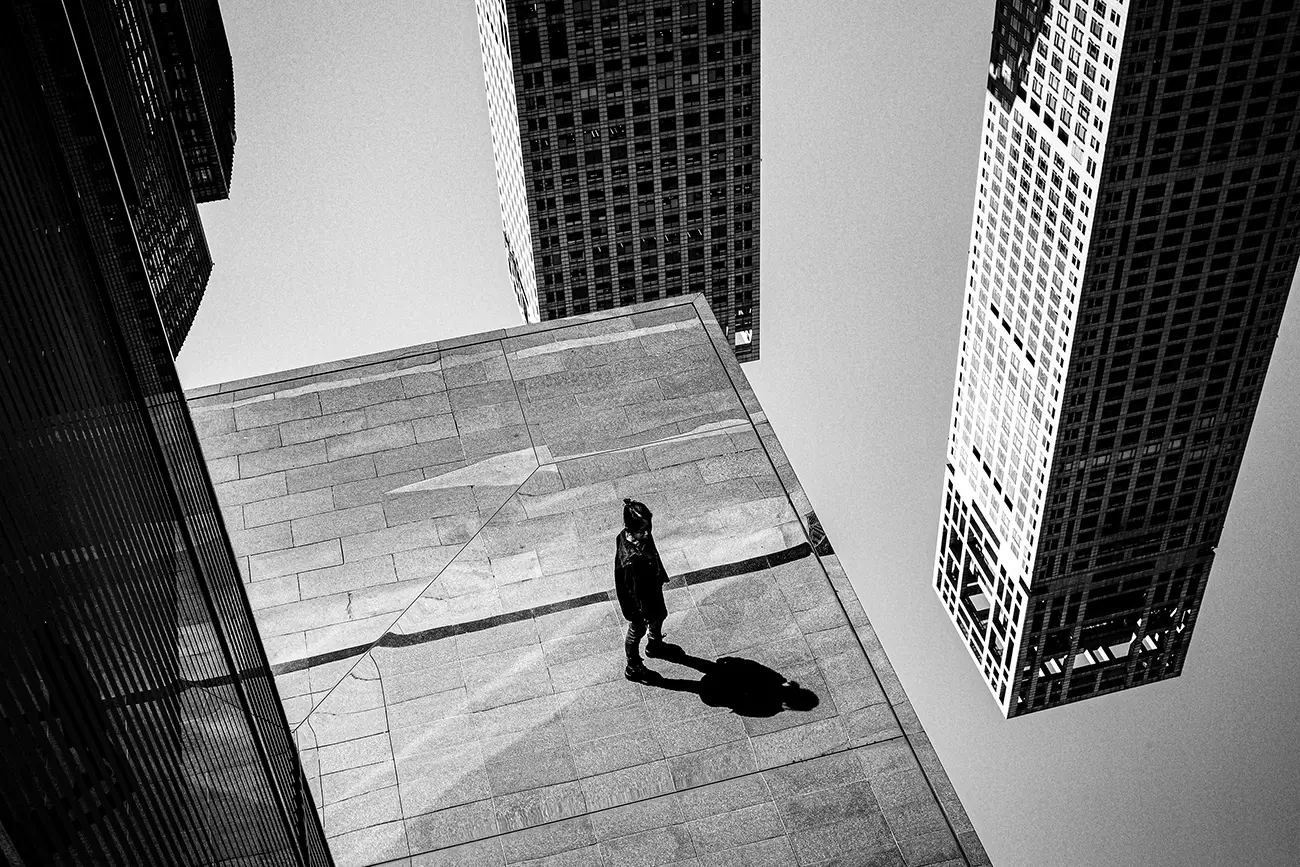
Unreal World from the series A City’s Tradition and Modernity © Chris Yan
When walking in Beijing, you often see the collision of tradition and modernity, and you often have the illusion of traveling through history and the future. This photo was taken in Beijing's business district. The roof outside a store is a giant mirror that reflects people passing by. When the photo is rotated 180 degrees, oh my god, this is an unreal world.
www.chrisyanyan.com
@chrisyan1981
All About Chris Yan
Joe Buergi (Switzerland)
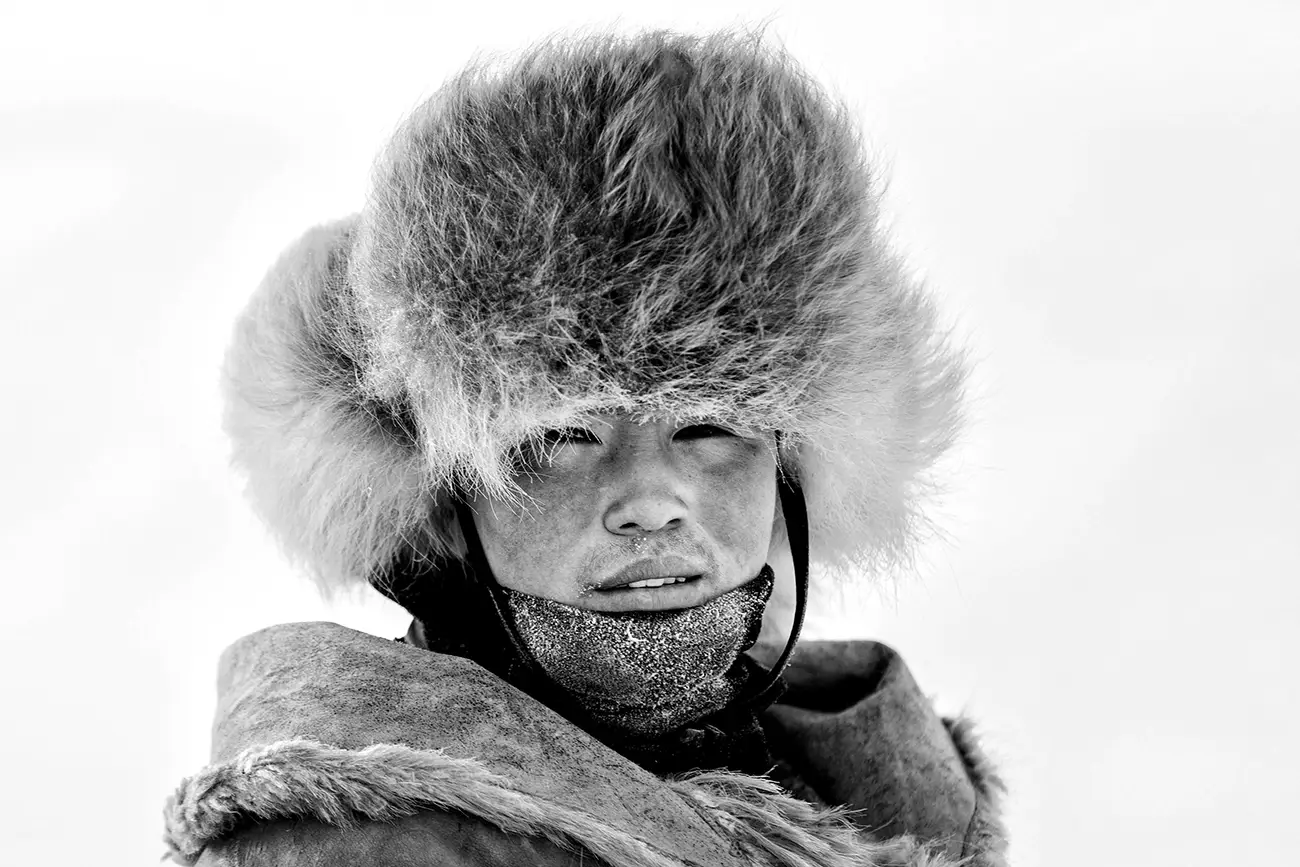
Mongolian nomadic herder from the series Mongolia - Migration of the eagle hunters © Joe Buergi
Mongolia – The migration of the eagle hunters
I found myself immersed in a world untouched by time. My journey with the Mongolian nomads began as a photographer and a desire to witness a way of life so deeply rooted in tradition by photographing the daily life, the herders, the animals and the landscape.
As I joined the nomads on their winter migration, walking alongside them for 150 kilometers through the rugged terrain, I quickly learned the resilience and determination required to survive in such harsh conditions. The biting cold and relentless winds tested my endurance and my equipment, but the warmth of the nomads’ spirits and the beauty of the landscape kept me going.
josefbuergi.com
@josefbuergi
Michael Anker (Germany)
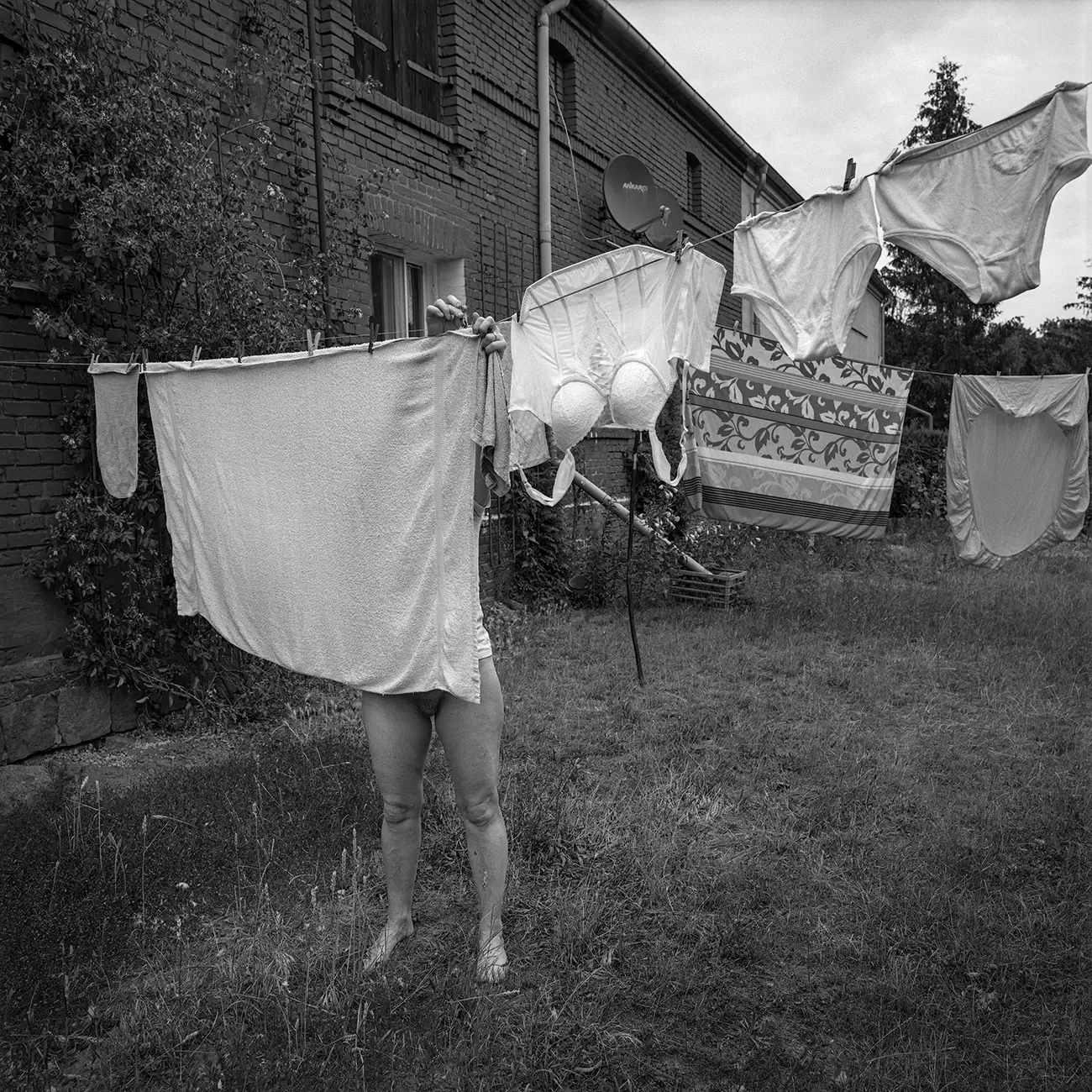
The Dark River © Michael Anker
For several years I have been working on my photographic cycle Remember me. I am looking for traces of my cultural identity. At the same time, it is a long-term study of the relationship between people and landscapes. Two topographies that lie away from media attention come into my view: the Oderbruch on the northeastern border of Germany with Poland and the former German language island of Hirschenhof in today's Latvia. Both of them, which are subject to serious design transformations, are also saturated with traces of the last great war. My family stories are rooted in these rooms.
The first part of the study, The Dark River, presented here, tells of my father's family's sedentary relationship with nature. In the subsequent second part, The Dark Silence, the story of migration and flight of the maternal family is illuminated. Without explicitly proclaiming it, the work is an invitation to reflect on the fact that economically or politically motivated migration has always existed.
The anchor point of the narrative of The Dark River is the Oder River, which today forms the border line between Germany and Poland. On the Oder, my father's family experienced the two-and-a-half-century-long transformation of the once primeval river and swamp landscape into an agrarian cultural area, initiated by the Prussian King Frederick II. But that's not all, the fiercest battle of the Second World War raged there in 1945. At the end of it, my father met my mother's family, who reached the Oderbruch on a trek from the Wartheland/Poland. They later met while dancing in the Schwarzer Adler in Seelow. In The Dark River, memories and dreams come to light that were buried a long time ago. Calm and dark, the Oder flows full of memories of itself and the people on its banks. The sky is reflected in her, even at night. Dark shallows remain hidden. Sluggish, like the stream, life makes its way through the plains, carrying my own family history with it. Where it is left to itself, the old landscape remembers itself, its fertility and the myths that surrounded it. Splinters in her skin make her feel her vulnerability, keep the pain alive. The scars grow deceptively.
The images are made analogue on 120er film. It seems to me to be the only relevant format for processing the history and stories in an epic way.
www.ankerphoto.de
@michael.anker_fotografie
All About Michael Anker
Kevin Lyle (United States)
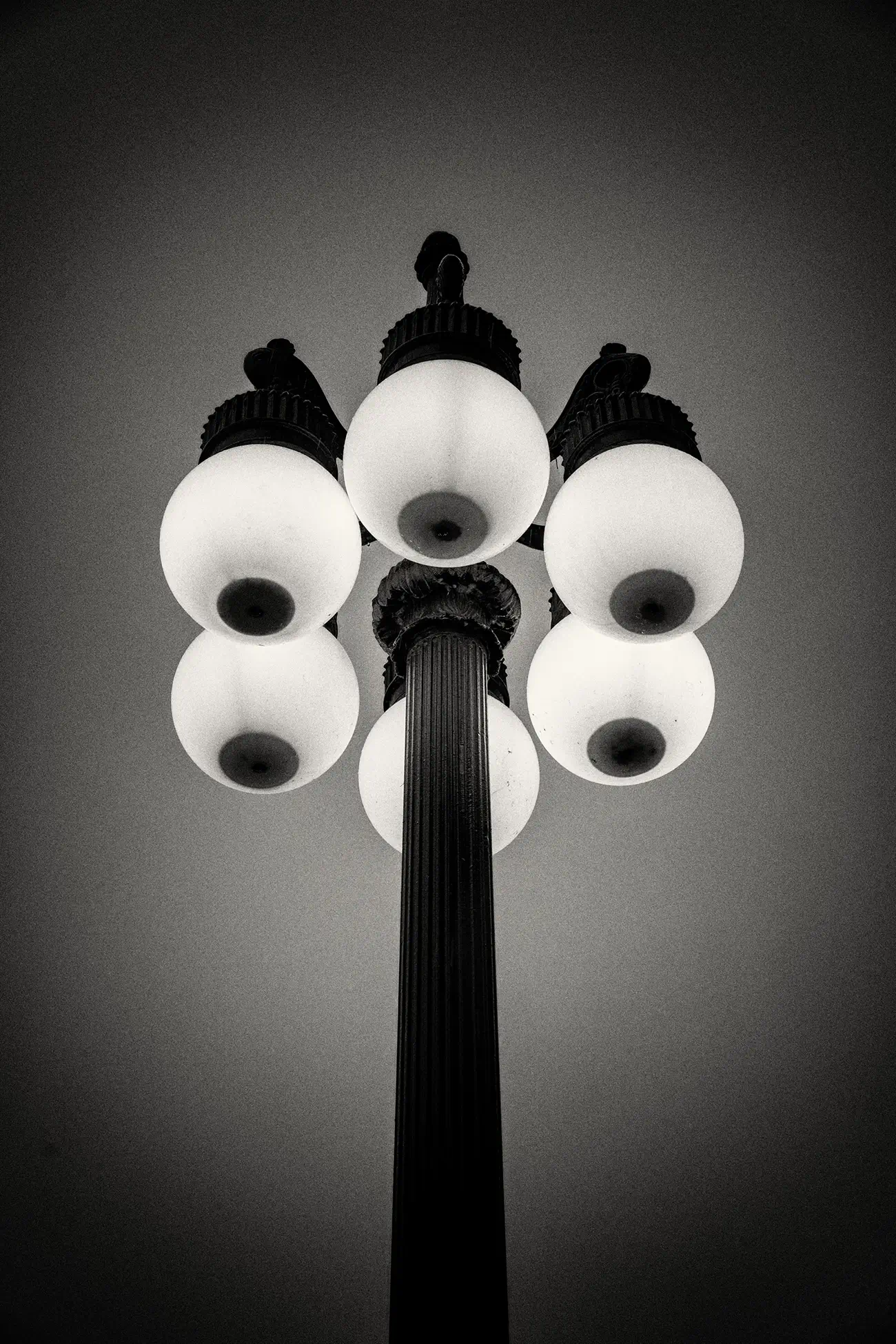
Light Geometry © Kevin Lyle
The simple idea that rather than the light source revealing the subject, the light source is the subject.
www.kevinlylephotography.com
All About Kevin Lyle
Jizhou Tang (China)
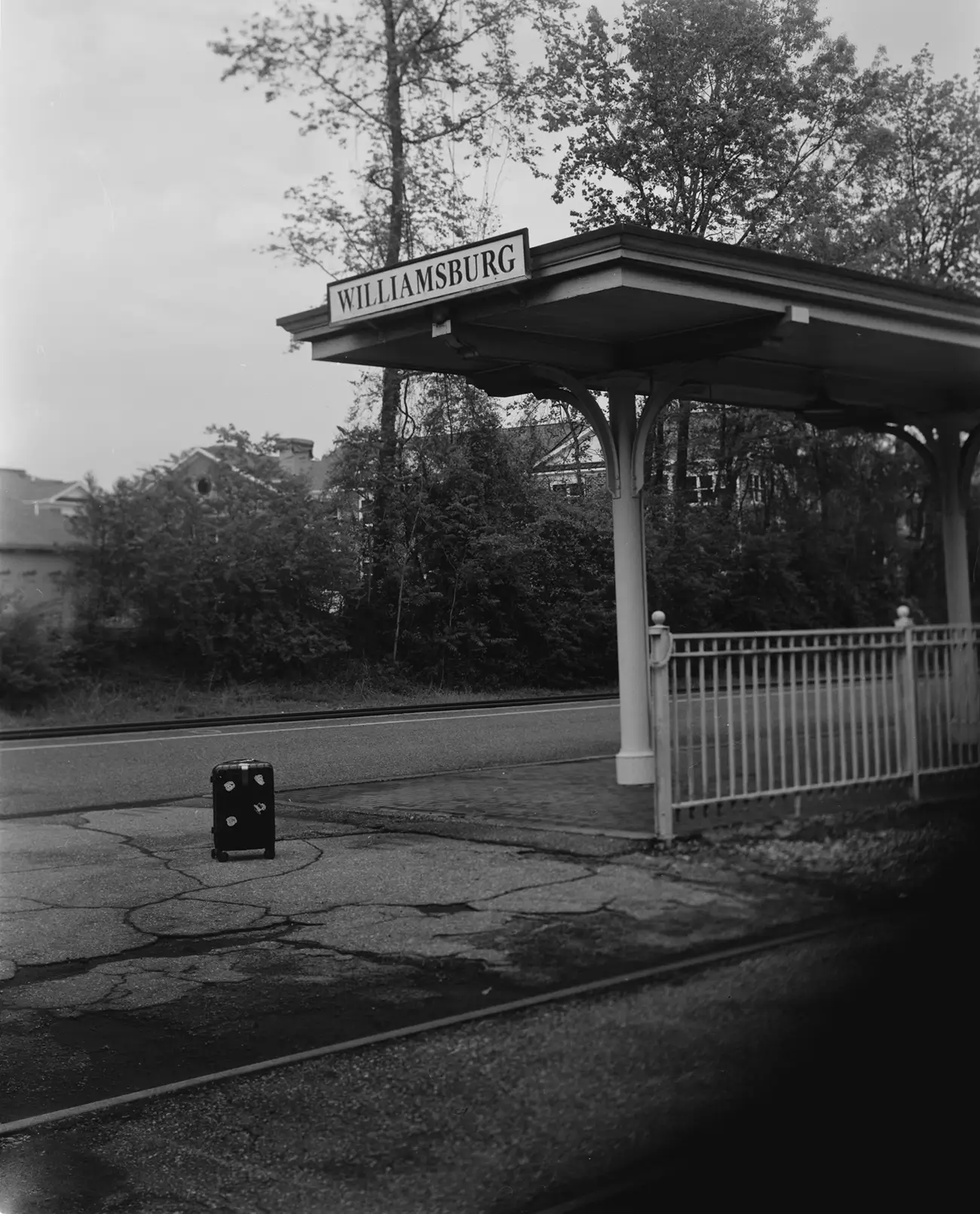
The Train Station from the series Don’t Forget to Go Back Home © Jizhou Tang
As a foreign student from a large city in southern China, my first year of college in Williamsburg, Virginia, has been filled with a mixture of excitement, overwhelm, loneliness, and nostalgia. Living in such a contrasting environment was an unprecedented experience for me. This body of work delves into my feelings of being an alien in this new 'home,' where I constantly explored my surroundings, questioned my sense of belonging, and reflected on my connections to family.
ctlandu.github.io
@ctphotography77
All About Jizhou Tang
Michael Potts (United States)
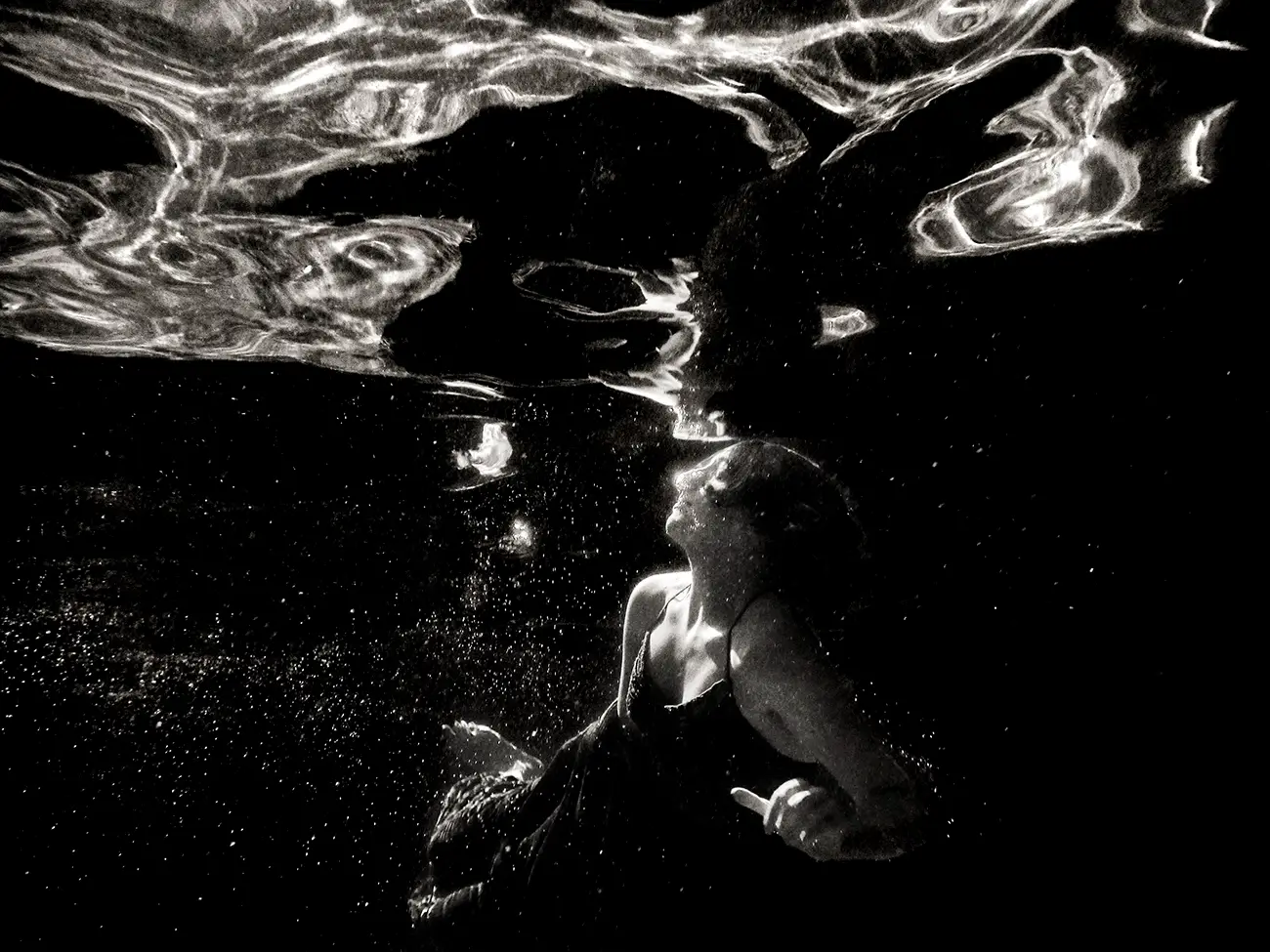
Dreamtime © Michael Potts
Dreamtime is my ongoing 2017-present collection of dreamlike
underwater images that are meant to evoke feelings of peace,
excitement, and sometimes nightmare-ish feelings.
The sequence is meant to take the viewer from the surface of the
conscious into the subconscious and back again, a descent into dark
and re-emergence into the light, much like a spiritual journey into the
valley and back to the mountaintop.
www.myq-art.com
@MRP_Visionaries
All About Michael Potts
Michael Scandling (United States)

Sonoma Serra from the series Horizon © Michael Scandling
My fascination with ocean horizons goes back to when I was eight years old; the very first time saw the ocean. I was immediately captivated, fascinated, and riveted. The first point of interest was seeing if I could see the curvature of the Earth. I couldn’t. That was a disappointment but the horizon still held my attention. I wanted to be on the horizon and I tried to stretch my viewpoint so far that I felt I was at the horizon. It gave me a tremendously expansive feeling. And a very calm feeling. Ever since then when the stresses of life got to be too much I would go to the ocean and gaze at the horizon. Viewing the horizon and stretching my viewpoint outward almost always calmed me down after a while. The first time I saw a streak of light on the horizon it took the effect to an entirely new dimension. The streak of light is a sign of hope and of new possibilities. On a parallel path, throughout life I was more and more drawn to minimalist art and so the horizon streak became, in my mind, an artistic end in itself. That makes it a never-ending project.
www.amagaphoto.com
@amagaphoto
Beverly Conley (United States)
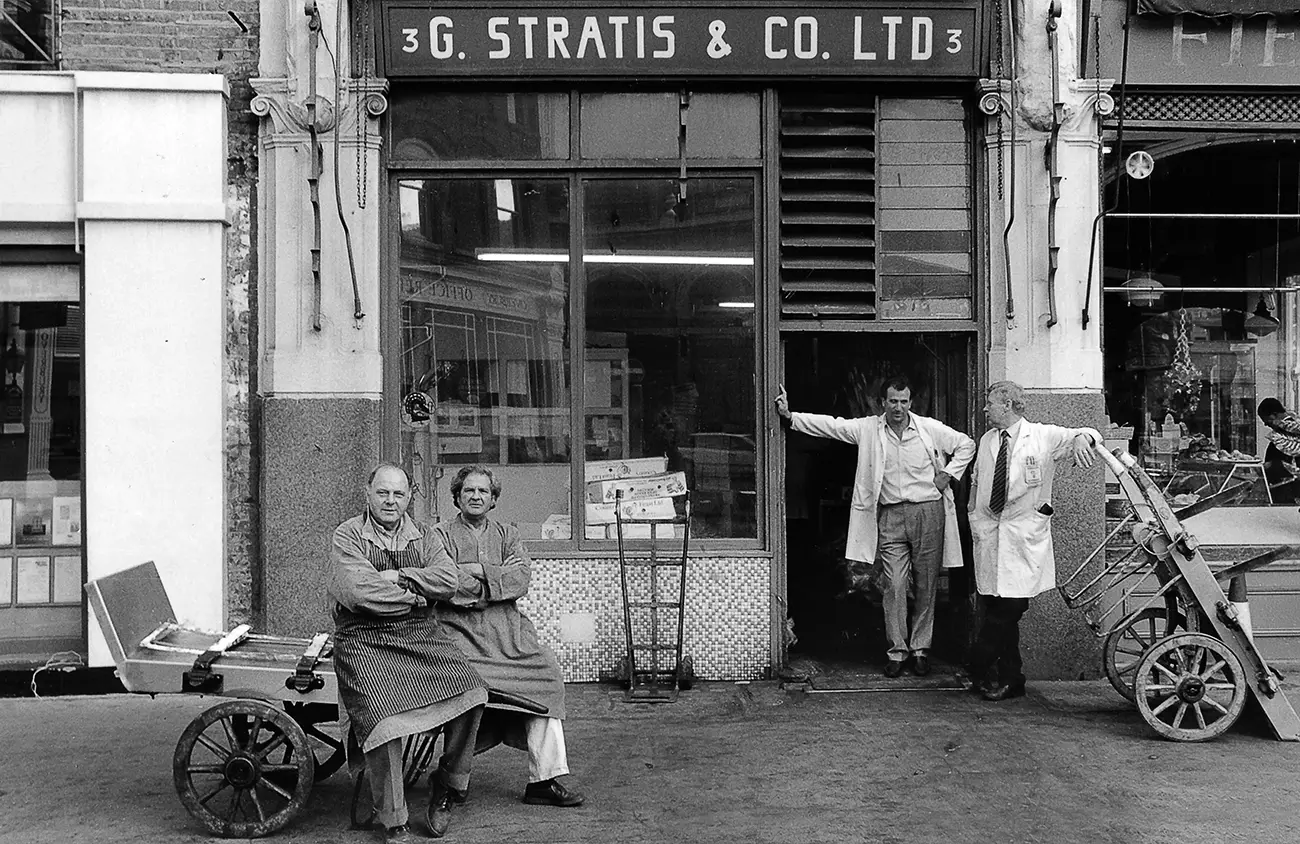
G Stratis & Co. Ltd from the series Smithfield Market © Beverly Conley
Shortly after moving to London in 1990, I began photographing at Smithfield Market. I was fascinated by the strong thread of family tradition among the employees and by their work methods which had scarcely changed in 130 years.
I had no idea that the 800 year old home to the meat trade was about to undergo a massive face lift. New hygiene standards put forth by the European Union forced the remodeling that included temperature controlled shops and sealed loading bays. These renovations I soon discovered would affect not just the building but the work itself.
In the not so distant past, tonnage was up, and meat came through the market all night long, and with it a lot more laughter. Down-to-earth porters with nicknames like Silly Billy, Caruso and Sexy George were more likely to exchange salty banter while waiting for the whistle that signaled the beginning of their day.
Times being what they were at Smithfield, the name of the game became “task and finish” or get your work done and go home. To change, to modernize, meant to risk everything for the men who, like their fathers and grandfathers before them, had Smithfield in their blood; it truly was a way of life. I wanted to document that world before it was too late.
www.beverlyconleyphotography.com
All About Beverly Conley
Apostolos Kaloudis (Greece)
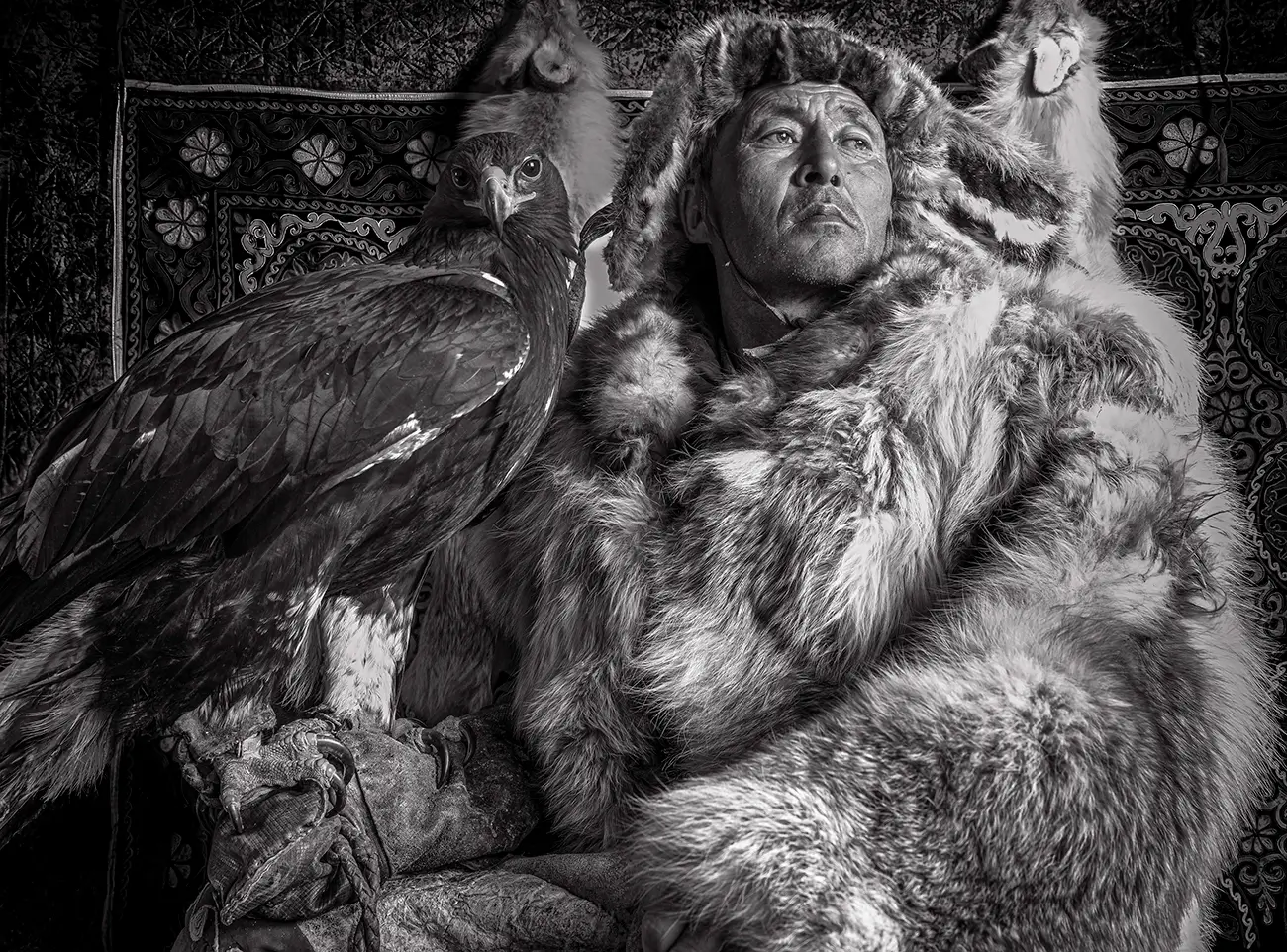
Eaglehunter Huanjol, Last of his Name from the series Children of the Central Asian revolt of 1916 © Apostolos Kaloudis
“Own your identity. Love who you are in the world. Love your deafness.” – said ones Nyle DiMarco. For thousand of years, nomadic hunters used birds of prey as a valuable hunting companion across the northern steppes from Eurasia to China. It was fundamental for the acquisition of food and furs in the harsh,unforgiving winter months. The relationship between the hunter and the eagle is forged when the eagle was a wee eaglet and the image symbolizes a trusted bond between the two. Here is eagle hunter Huanjol, a fine master in the traditional art & knowledge (tak) of taming eagles. He has no children. His unique way of training, as described by an older eagle hunter is threatened to be lost.
@alpha0929
All About Apostolos Kaloudis
Daisuke Kishi (Japan)
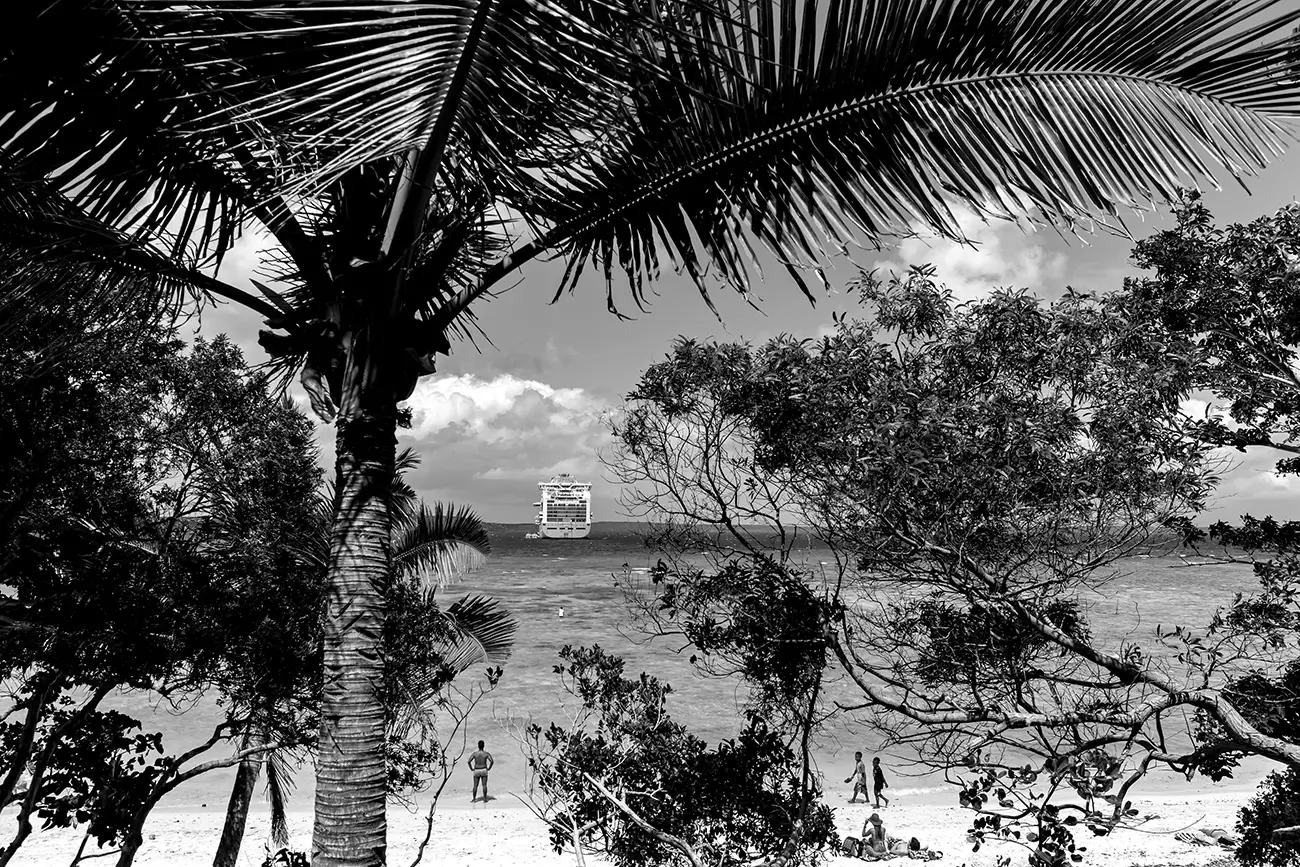
Port of Lifou, New Caledonia from the series Portscape © Daisuke Kishi
Ports are geographically located at the edge of our living world, but that
doesn’t mean that it is the world’s end. It is rather a gateway to another — by
assembling the scenes around the ports I've encountered during my career on
cruise ships, I tried to depict the connectivity and diversity of the globe which
really helps me to broaden the shrunken world in my mind.
wanderthewonder.net
@photoysrus<
All About Daisuke Kishi
Karlynne Wintels (Netherlands)
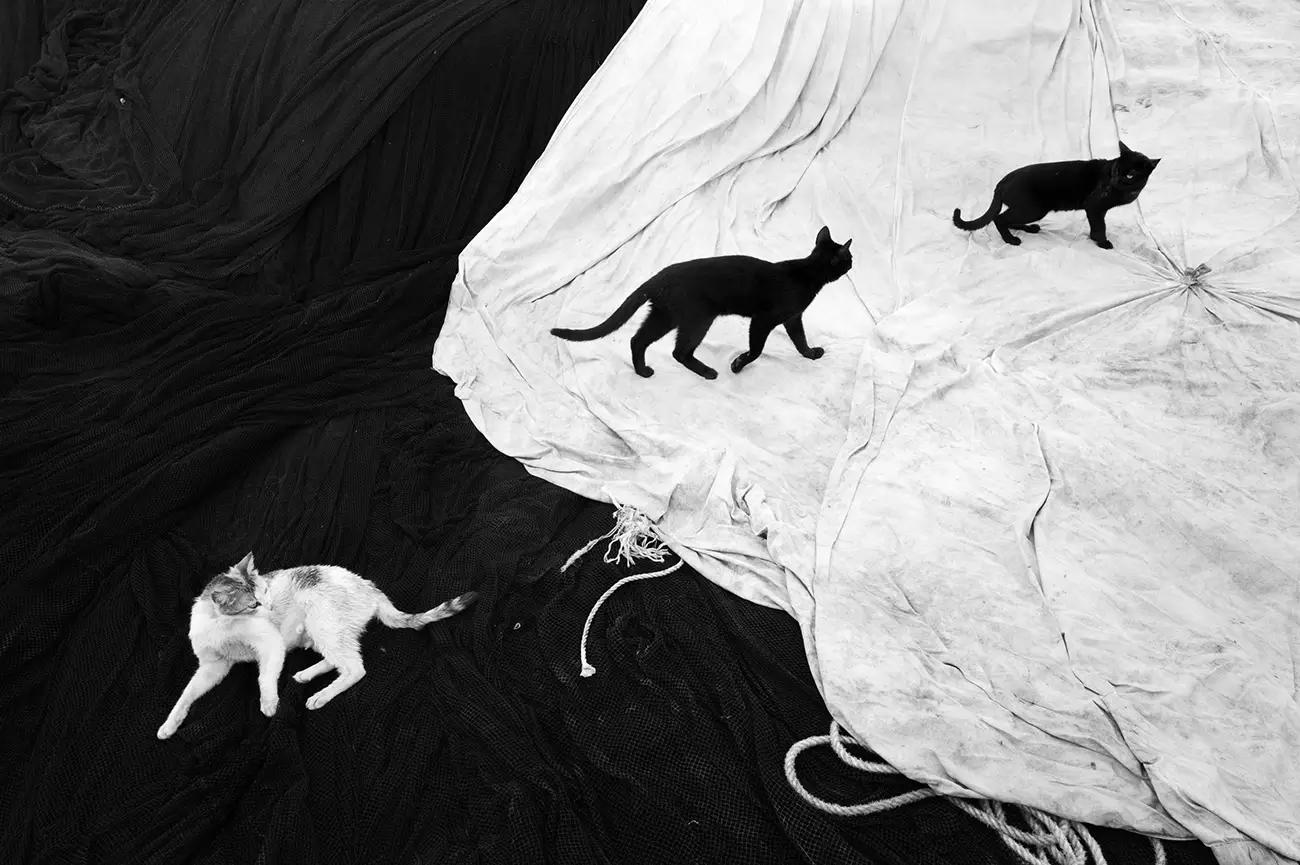
Feline Harmony © Karlynne Wintels
Feline Harmony was captured at a local fisherman's port in Turkey in June 2024. During the summer months, when fishing regulations keep the fishermen ashore, cats roam freely in search of food and companionship. The image portrays black cats resting on white plastic sheets and a white cat amidst dark fishing nets, creating an unexpected and candid Yin and Yang effect.
kw-photography.com
@wintels_photography
All About Karlynne Wintels
Arkadiusz Kubisiak (Poland)
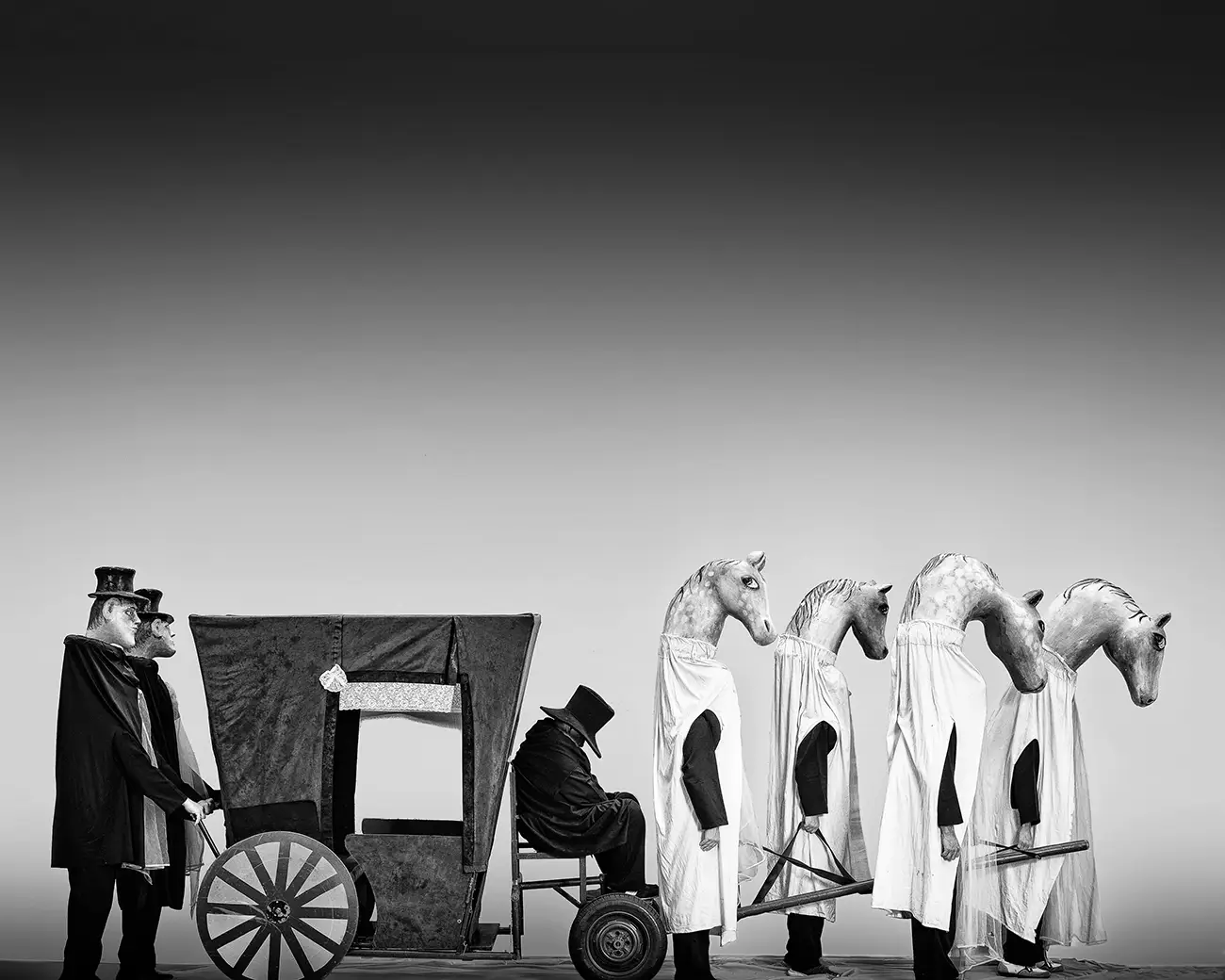
Laundry Room, Poland 2023 © Arkadiusz Kubisiak
25 years ago, a Center for People with Mental Disabilities was established in
Pionki, Poland, and soon after, a puppet theater was also created there. The
theater is currently located in a room that was previously a laundry room, hence
the name “Laundry.
The founder and director of Laundry Room Theater is Paweł Sulima. I met him
almost 40 years ago when we went to high school together. After that, we lost
touch for a long time, but I knew he had become a specialist in puppetry and
puppet theaters.
Recently, I saw a performance he created with large puppets, and it was a
visually stunning and captivating experience. I was not aware that the actors in
this theater were individuals with mental disabilities who have been coming to
the Center created especially for them for over 25 years.
In the spring of 2023, I reached out to Paweł with a proposal to tell the story
about the Theater, the Center, and its People. However, finding time for
additional activities in their busy day was difficult. We initially started working on
a reportage about the people and the everyday life at the Center. Later, the story
developed and also encompassed the Theatre itself.
The actor wears the puppet like a costume to give it their personality and bring
it to life. The theater stages classic fairy tales like Cinderella and Snow White.
Over the last 25 years, they have created eight fairy tale performances and
numerous puppets. Most theater plays take place outdoors, primarily for
children. The troupe also organizes street parades. Sometimes, they even travel
across the country to present a show when invited. The Center's staff have
created a close-knit team that functions like a family.
arkadiuszkubisiak.com
@arkadiusz_kubisiak
All About Arkadiusz Kubisia
Eugene Ellenberg (United States)
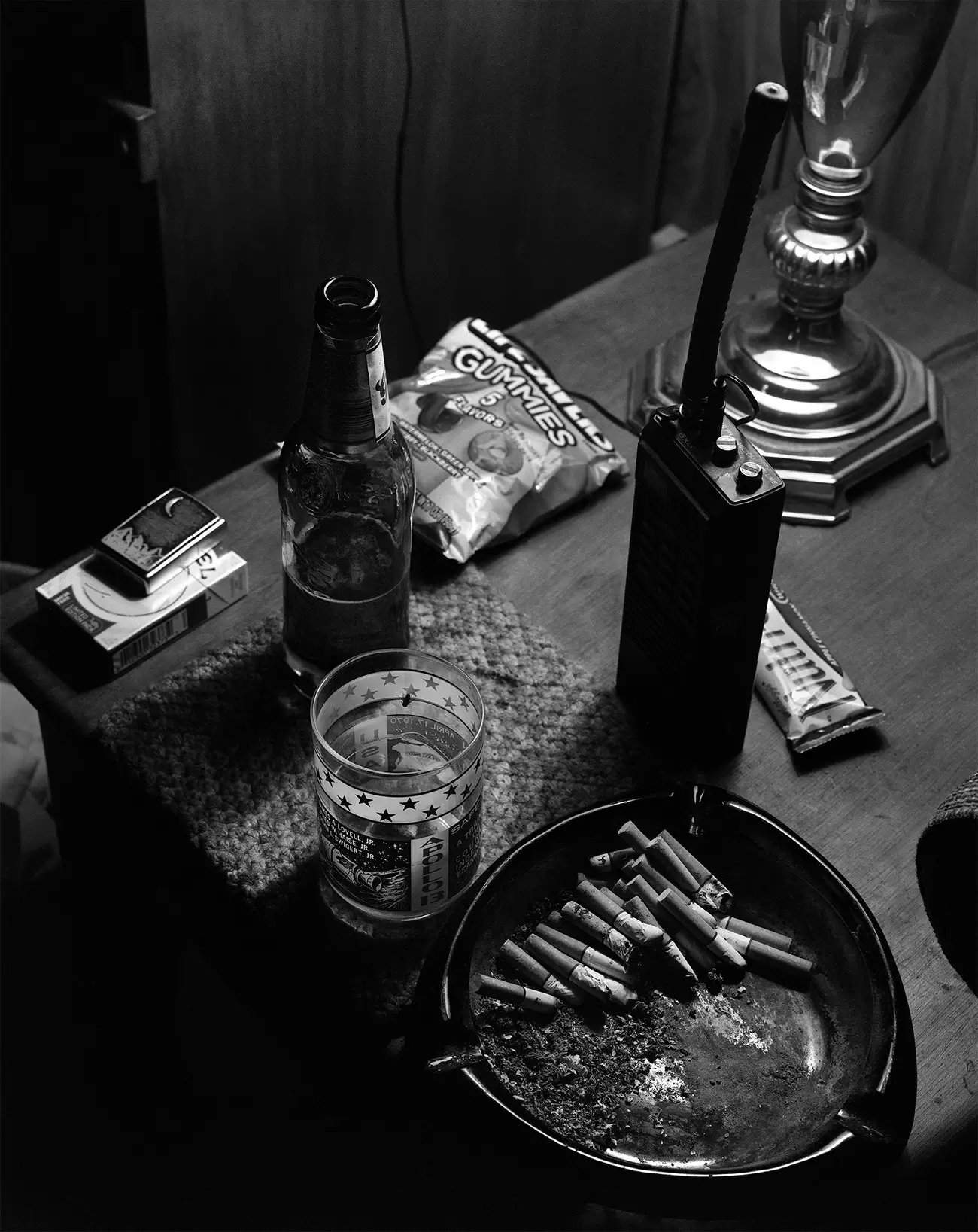
Nightstand from the series In My Father’s House © Eugene Ellenberg
While visiting my parents during my college
years, I photographed a napkin on which my father had inscribed two Elvis song titles,
‘In My Father’s House’ and ‘I Was the One.’ This small note was an insight to the private
introspections of my father, the intimacy of which motivated me to investigate our
relationship through the medium of photography. I expounded upon this by
documenting various elements of our home and eventually asking others in my family to
sit for portraits and to participate in constructed narratives. The majority of these
images were captured using a large-format camera, requiring a slower, more meditative
process of photographing my family members while also conveying the quiet tone of
our relationships at that time. Years later, my father would be diagnosed with terminal
cancer which had already spread to his bones. He was with us for seven days after the
diagnosis. In his last days of consciousness, my father began to lose touch with the
world. In those final hours, I grappled with my own disconnect as I slipped between the
roles of active participant and documentarian. These images blur the lines of what I
recall, what I want to admit and perhaps what I wanted to see.
www.eugeneellenberg.com
@eugeneellenberg
All About Eugene Ellenberg
Armineh Johannes (Iran)
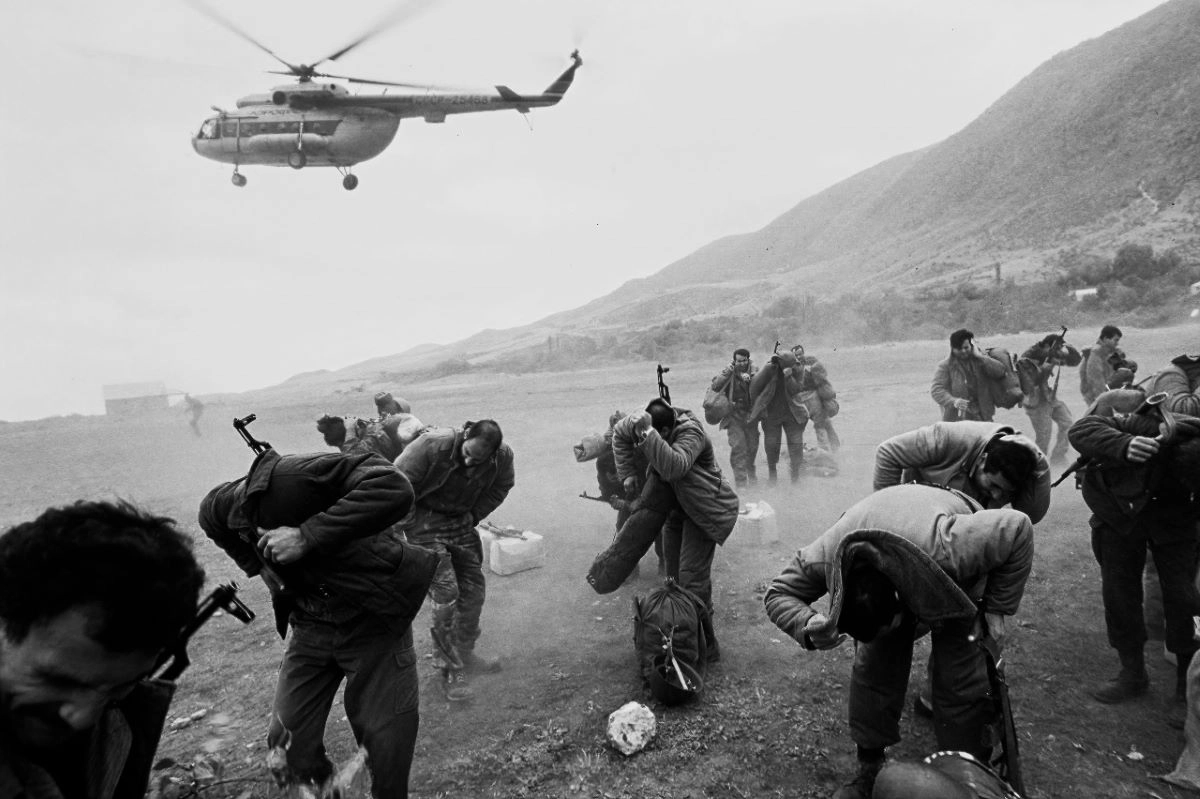
Karabagh/Artsakh - conflict, tears and displacement © Armineh Johannes
In 1923, the Soviet Union established the Nagorno-Karabakh Autonomous Oblast—which was home to a 95 percent ethnically Armenian population—within the Azerbaijan Soviet Socialist Republic. Nagorno-Karabakh’s regional legislature passed a resolution in 1988 declaring its intention to join the Republic of Armenia despite its official location within Azerbaijan. Armed fighting between the two republics, which have a long history of ethnic tension, quickly followed. Amid Soviet dissolution in 1991, just as Armenia and Azerbaijan achieved statehood, Nagorno-Karabakh officially declared independence, and full-scale war erupted. The first Karabakh war, from 1988 to 1994, resulted in roughly thirty thousand casualties and created hundreds of thousands of refugees. By 1993, Armenia had gained control of Nagorno-Karabakh and occupied 20 percent of Azerbaijan’s geographic area. In 1994, Russia brokered a ceasefire known as the Bishkek Protocol, leaving Nagorno-Karabakh de facto independent, with a self-proclaimed government in Stepanakert, but still heavily reliant on close economic, political, and military ties with Armenia.
Between 19 and 20 September 2023, after 9 months of blockade which had deprived the population of Artsakh of food and medicine and all other goods, Azerbaijan launched a large-scale military offensive against Artsakh, which was a violation of the ceasefire agreement signed in the aftermath of the Second Nagorno-Karabakh War in 2020.
The September 2023 war led to the ethnic cleansing of the population of Artsakh; fearful for their lives, the population started moving out of Artsakh, where Armenians had lived for 7000 years, and within just days Artsakh lost all of its Armenian population. I decided to follow as many people as possible in various parts of Armenia where they had been displaced and resettled, in order to talk to them and to try and tell their story through my photos. It was a very emotional journey for them and for myself as a photographer. In all these years that I have been taken photos there have been three occasions that I have cried while taking photos – all those three times were in Armenia; the last one was when I was taking photos of a very distressed mother and daughter who had been displaced from Karabagh…..
The entire 106,000 inhabitants of Artsakh are now displaced and live in different villages and cities of Armenia, after having left behind their land, their homes, cars, cattle... to save their lives, they left in a rush in the clothes they were wearing and could not bring anything else with them.
I believe that you take the best photos if you feel a close connection to the subject that you are taking photos of. That connection will highlight the life and emotion in the photo you are taking. I basically love people and enjoy capturing the lives of people I meet...
Even though most people I photographed were very emotional and very saddened when talking about their painful departure and displacement, yet every single one of them expressed hope and willingness to return to their ancestral homeland. Through my photographs I have tried to capture their emotions, and their sufferings and perhaps a glimpse of hope in their eyes for the future.
arminehjohannes.photodeck.com
@arminehjohannes
All About Armineh Johannes
